
Today, 9.6.2023, we commemorate the 20th anniversary of the Masoala rainforest’s existence in Zurich. We would like to thank the client, Zoo Zurich, for their trusted collaboration. Also, we greatly appreciate all the curious visitors. A member of our Case Studio team has captured the current state of the Masoala rainforest in this video. Immerse into these awe-inspiring wonders of nature.
The main principle of the jungle, with its multi-layered, lush intricate plant life, is embodied in the design of the topography, water and pathways. The most important and striking component of the rainforest is the tropical vegetation, which provides a habitat for a diverse array of animals. Among them are lemurs, birds, frogs, reptiles such as chameleons, turtles, geckos and fishes. Can you spot them in the video?
Today, 9.6.2023, we commemorate the 20th anniversary of the Masoala rainforest’s existence in Zurich. We would like to thank the client, Zoo Zurich, for their trusted collaboration. Also, we greatly appreciate all the curious visitors. A member of our Case Studio team has captured the current state of the Masoala rainforest in this video. Immerse into these awe-inspiring wonders of nature.
The main principle of the jungle, with its multi-layered, lush intricate plant life, is embodied in the design of the topography, water and pathways. The most important and striking component of the rainforest is the tropical vegetation, which provides a habitat for a diverse array of animals. Among them are lemurs, birds, frogs, reptiles such as chameleons, turtles, geckos and fishes. Can you spot them in the video?

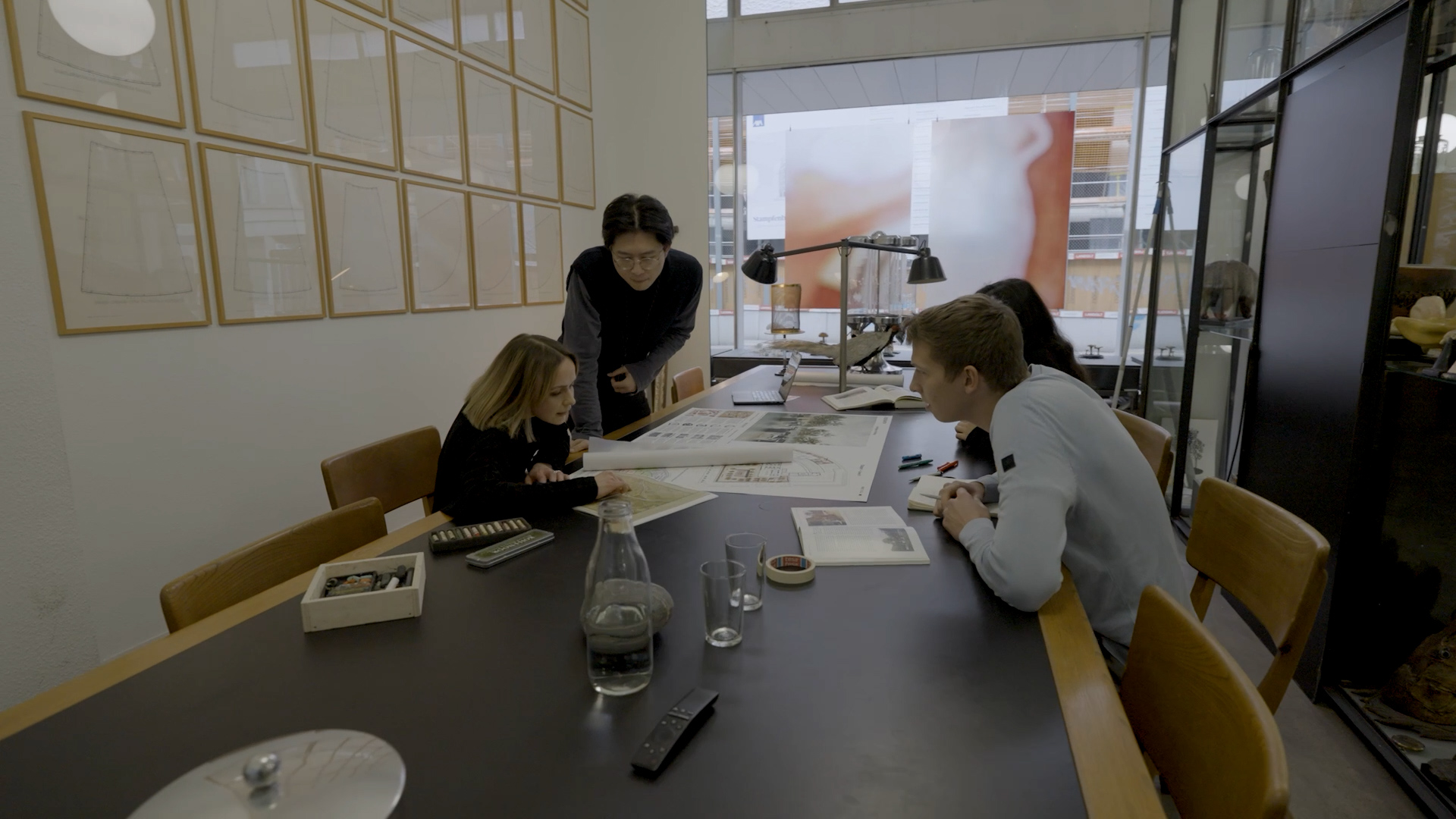

Wettbewerbsgewinn Studienauftrag im Varianzverfahren «Destination Jelmoli – Dachlandschaft» – Die Komplexität und die verschiedenen historischen Zeitschichten des Gebäudes sowie die zahlreichen Anforderungen an den Freiraum – wie Kühlung, Wasserrückhaltevolumen und die Schaffung von Räumlichkeit – stellten uns vor die Herausforderung, einen Ort zu gestalten, der nicht nur funktional ist, sondern auch einen Mehrwert für die Besucher bietet.
Beim Entwurf der Dachlandschaft war die Arbeit am Modell entscheidend, um die Geometrie mit ihren Höhenunterschieden und den zwei Ebenen zu begreifen. Die Kombination digitaler Methoden – wie Drohnen- und Wärmebildaufnahmen, Renderings und Punktwolkenmodellen – mit analogem Arbeiten, etwa durch Diskussionen am Modell, Skizzen und fundierte Literaturrecherche, ermöglichte es uns, die komplexen Aspekte der Dachterrasse zu verstehen und zu gestalten.
Die Dachlandschaft von Jelmoli soll ein öffentlich zugänglicher, einladender Ort der Begegnung werden, an dem Menschen aus verschiedenen Lebensbereichen zusammenkommen. Statt die Stadt aus dem gewohnten Blickwinkel der Strasse zu erleben, bietet dieser Ort mitten in Zürich die Möglichkeit, die Skyline und die umliegende Landschaft aus einer neuen Perspektive zu geniessen.
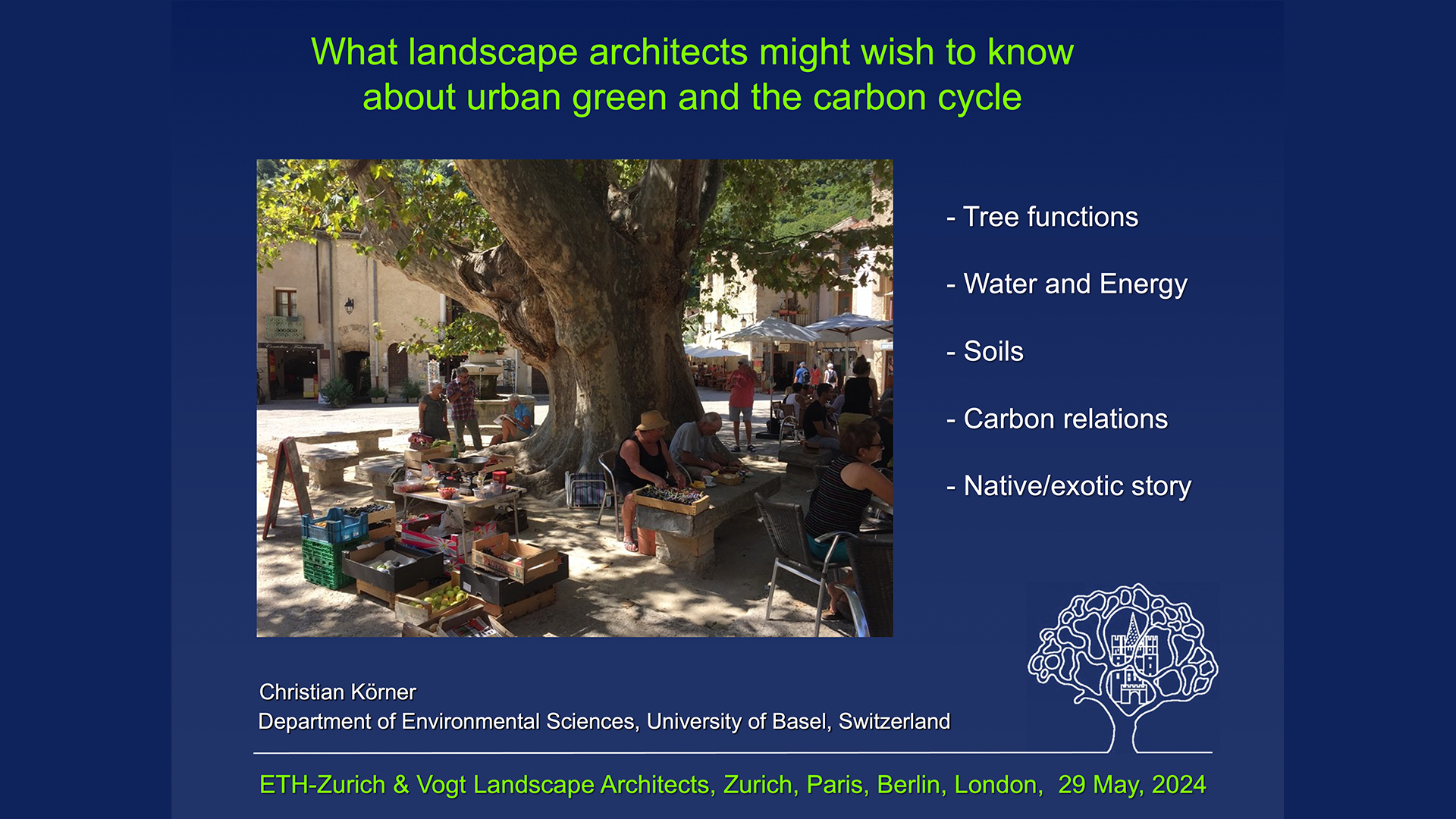

Prof. em. DR. DDr. hc. Christian Körner joined our Teaching and gave a lecture about the urban green and carbon cycle. He is teaching diversity and structure of plants, plant physiological ecology and systems ecology, geobotany (ongoing), alpine ecology graduate courses (ongoing) at the University of Basel.
Research projects: The influence of increasing atmospheric CO2 concentration on natural vegetation (incl. Swiss Canopy Crane project SCC in a mature forest), alpine plant ecology and biodiversity, the global high elevation treeline phenomenon, implications of climate change in the Mediterranean, various projects in bioclimatology, ERC advanced grant TREELIM exploring causes of tree species range limits in Europe (2009-2014). Long-term monitoring, Alpine Research Station ALPFOR on Swiss Furkapass.
in: https://duw.unibas.ch/de/koerner/
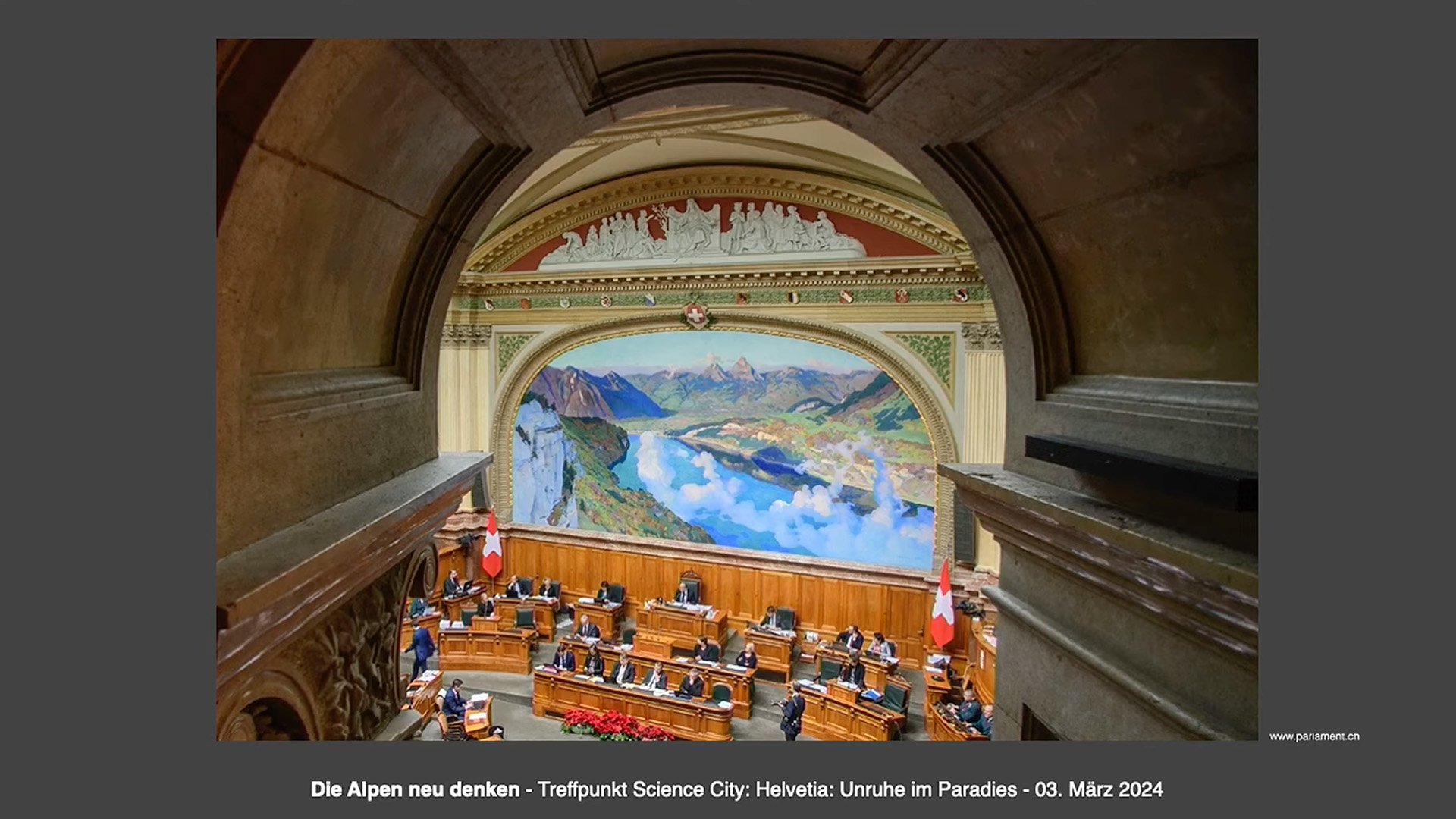

Wie die Alpen zur Seenlandschaft werden | Werden Bergtäler zunehmend von Felsstürzen bedroht? | Das öffentliche Angebot der ETH Zürich | Die Universität für alle | Mehr Infos auf https://www.treffpunkt.ethz.ch
Vortrag gehalten von Thomas Kissling, in der Bürogesamtleitung von Vogt Landschaftsarchitekten und ein ETH-Forscher bei der Professur Günther Vogt am Departement Architektur.
Der Alpenraum ist mit einer raschen Veränderung konfrontiert. Der Rückgang der Gletscher, das Auftauen des Permafrostes und die Verschiebung der Vegetationsgrenze verdeutlichen eindrücklich die Anfälligkeit des Bergmassivs. Es stellt sich die Frage, wie wir die Alpen in Zukunft nutzen möchten: Sind sie vor allem Lieferant für den wachsenden Strombedarf oder Urlaubsziel für den Tourismus? Welche Flächen sollen komplett geschützt werden? Landschaftsprofile bieten wertvolle Hinweise für die Neugestaltung des Alpenraums.
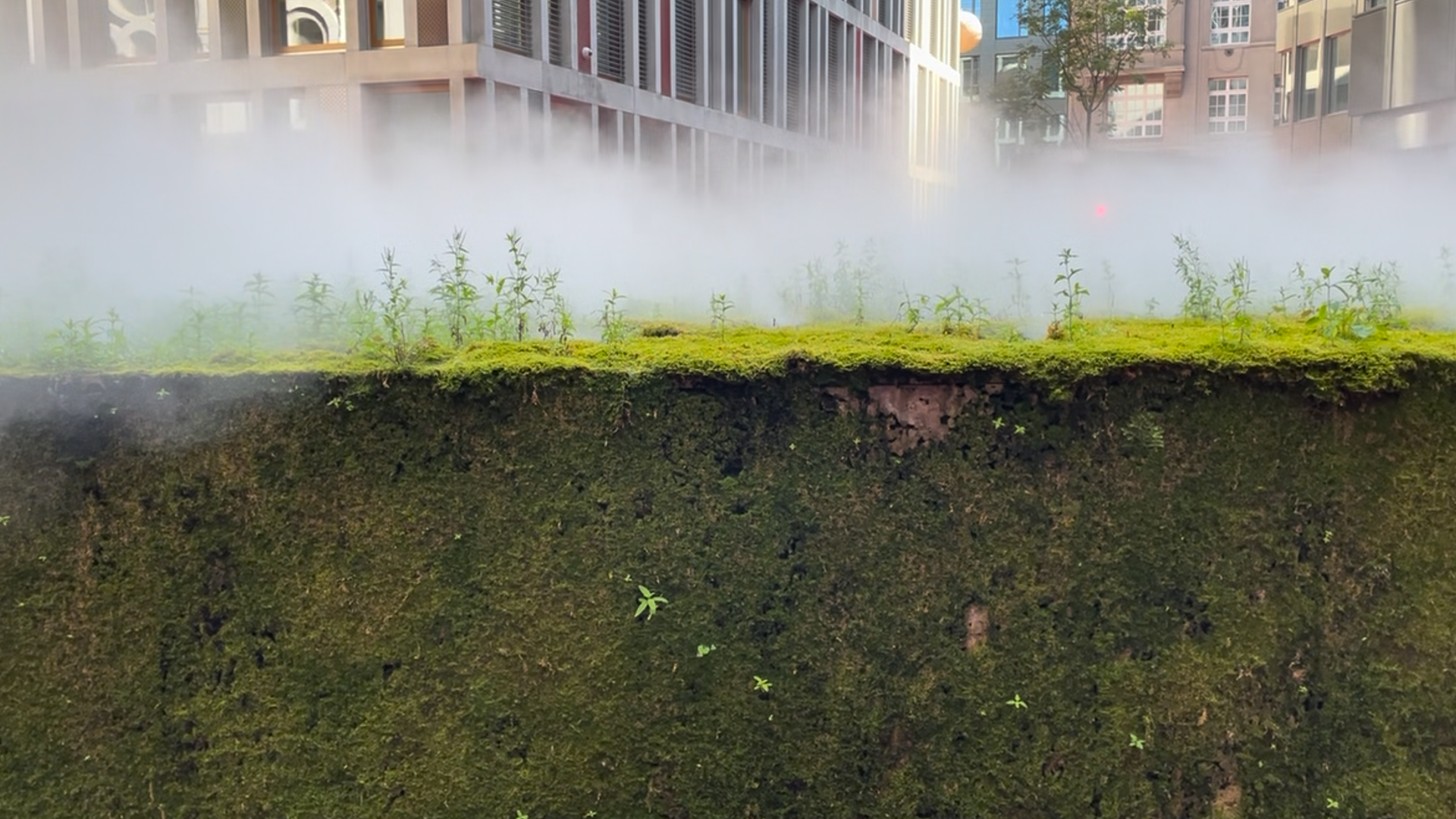

A transformer station in front of the Raiffeisen office building in St.Gallen covered with a tuff stone block - a project by Kienast / Vogt from 2002. Over the years, moss and plants have grown on the tuff stone because of the high levels of moisture around the stone produced by water mist that is released at regular intervals.
The large, rectangular block of stone sometimes seems a little lost, appearing big and heavy in its setting. However, occasionally, an airy mist rises from the porous surface of the giant and dissolves the surroundings, erasing the hard contours of the architecture, thus transforming the rough piece of rock into a mysterious, playful island.
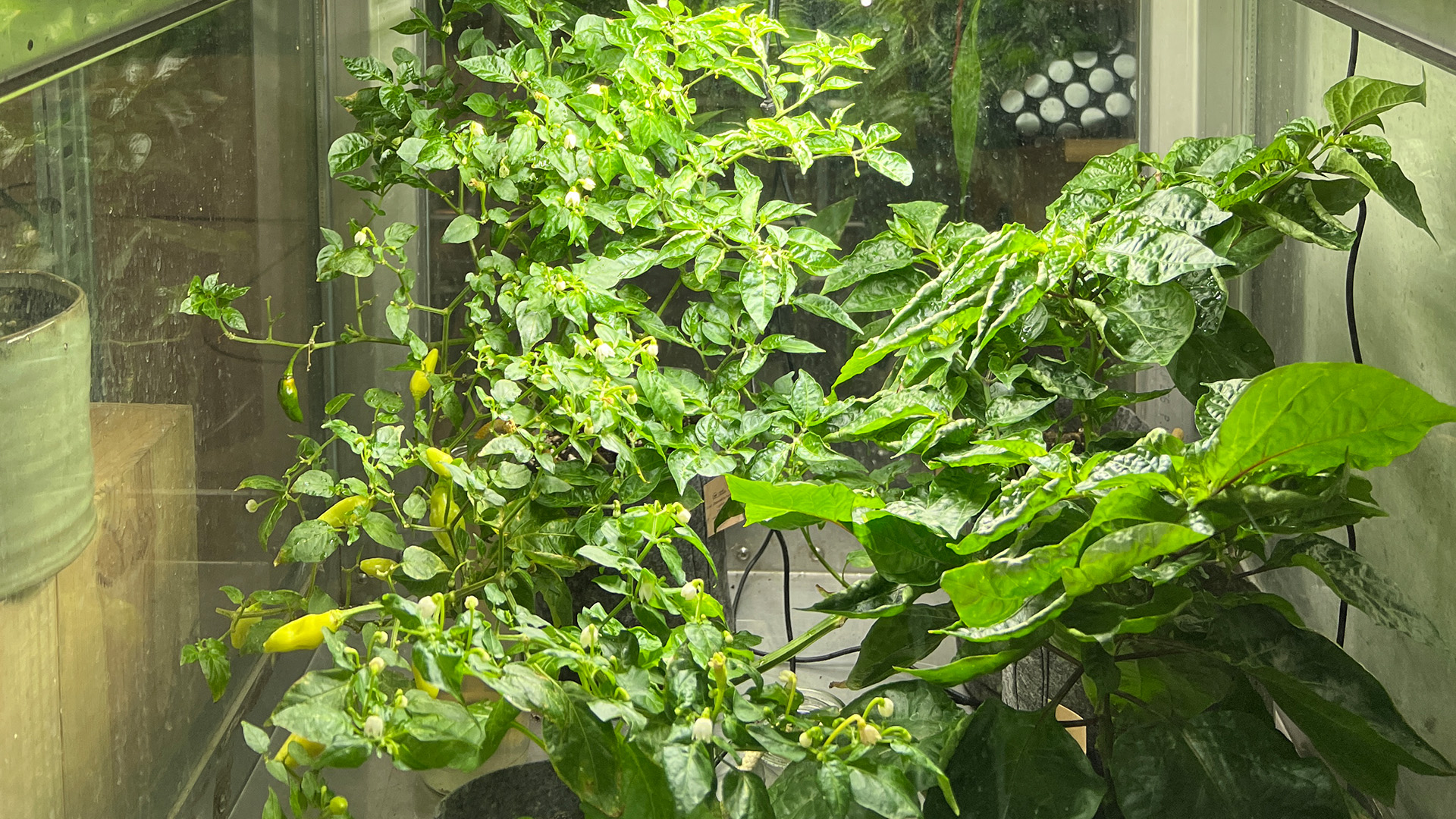

Some glimpses from the Vogt Zurich office. Drawing inspiration from the Wardian case, we have developed a petite greenhouse for the VOGT kitchen, not solely for the purpose of storing collected plants but also for growing fresh herbs, especially chili plants, to use as ingredients for our kitchen and lunch breaks. The care and maintenance of the plants growing inside are automated – the lightening is regulated by a timer, and the watering by an analog irrigation system that operates based on the laws of physics. Thus, the original Wardian case, conceived as a showcase for collected plants, now serves as an appreciated herb garden in the VOGT kitchen.
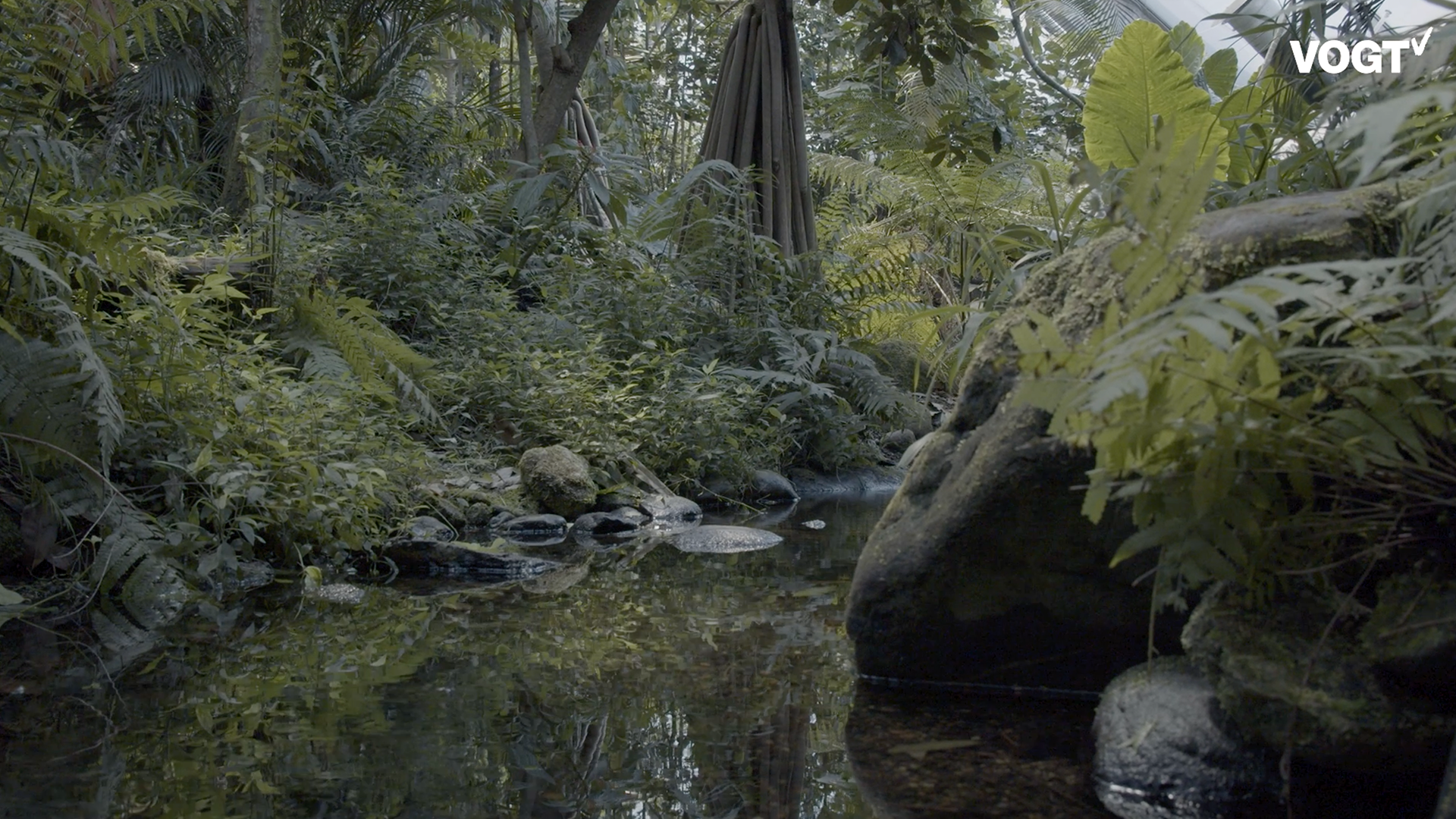

Today, 9.6.2023, we commemorate the 20th anniversary of the Masoala rainforest’s existence in Zurich. We would like to thank the client, Zoo Zurich, for their trusted collaboration. Also, we greatly appreciate all the curious visitors. A member of our Case Studio team has captured the current state of the Masoala rainforest in this video. Immerse into these awe-inspiring wonders of nature.
The main principle of the jungle, with its multi-layered, lush intricate plant life, is embodied in the design of the topography, water and pathways. The most important and striking component of the rainforest is the tropical vegetation, which provides a habitat for a diverse array of animals. Among them are lemurs, birds, frogs, reptiles such as chameleons, turtles, geckos and fishes. Can you spot them in the video?
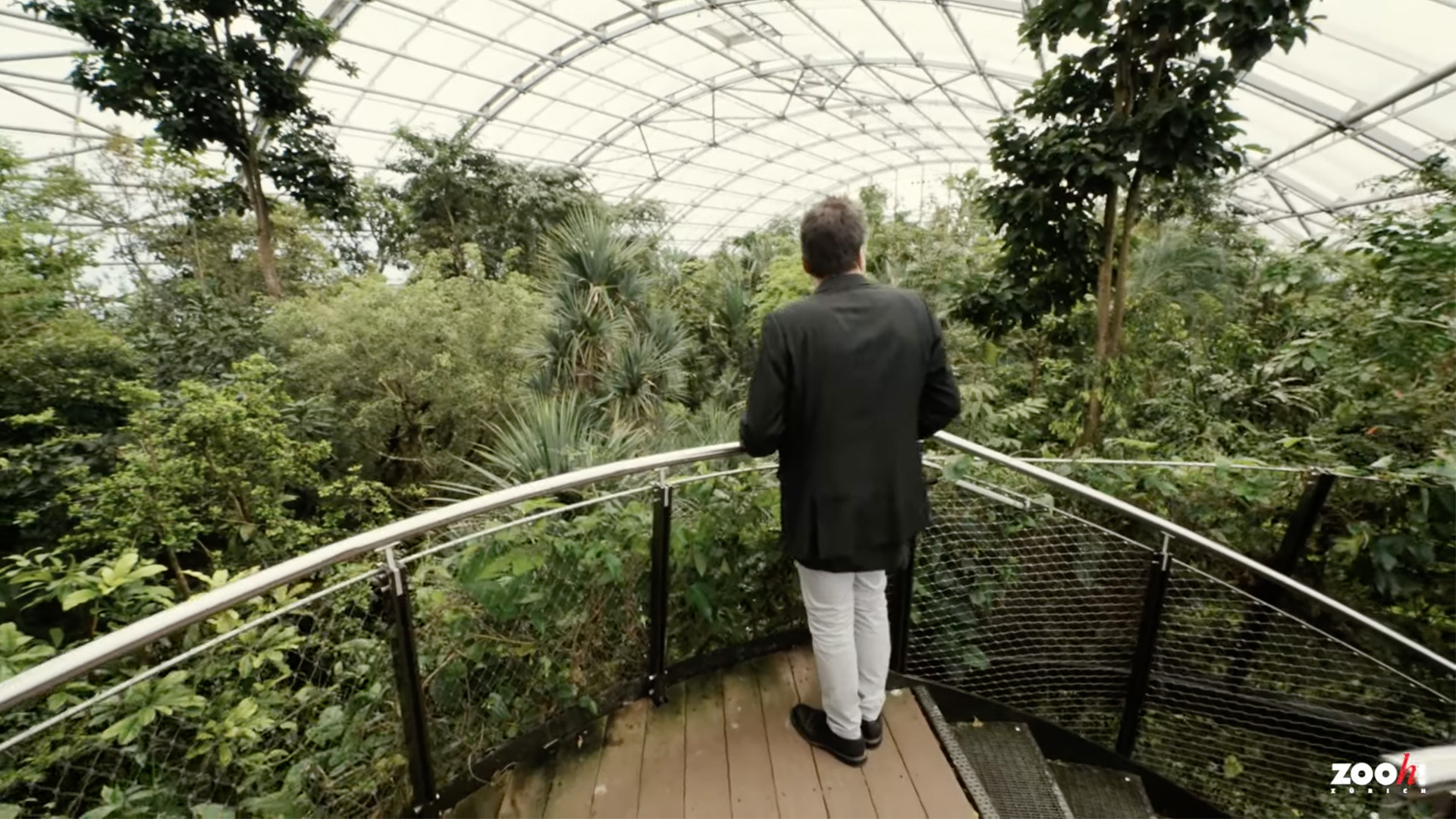

"It has been 20 years since our vision became reality: On June 30, 2003, the Masoala Rainforest opened its doors at Zurich Zoo. A mini-image of its Madagascan counterpart, it has since served as a conservation ambassador, drawing attention to endangered animal and plant species and transporting guests to a green oasis. Back in 1992, the then director of Zurich Zoo, Dr. Alex Rübel, decided to build a habitat directly related to a wildlife conservation project as part of his master plan. The choice fell on the Masoala peninsula in Madagascar. After objections, the symbolic groundbreaking ceremony was held on March 13, 2001. In 2003, the Zurich Zoo opened the Masoala Rainforest with many celebrities. This year the Masoala Rainforest celebrates its 20th anniversary. We look back and forward."
Text Zoo Zurich


Whether it's urban gardening, the revival of houseplants, or the debate about greened cities, landscape architecture's wallflower existence is over. This is partly thanks to Günther Vogt. With his offices in Berlin, London, Paris and Zurich, the landscape architect is shaping urban spaces around the globe. In addition, Vogt taught as a professor at the Institute for Landscape and Urban Studies at ETH. In an interview with Hannes Hug, Günther Vogt reveals what music is played in his Garden of Eden and what effect it has in the field of tension between green city and profitable buildings.
The conversation took place with Günther Vogt and Hannes Hug on swiss radio on the 12th of february 2023.
Tracks
Glenn Gould - A State if Wonder
The complete Goldberg Variations 1955 & 1981
Home Of The Brave. A film by Laurie Anderson
Label: Warner Bros. Records
Zehnder – Kraah
Label: Alpentöne Records
Tom Waits - Blood Money
Label: Anti, Inc. Epitaph Europe
Ludwig van Beethoven - Pastorale. Claire Huangci
Label: Berlin Classics

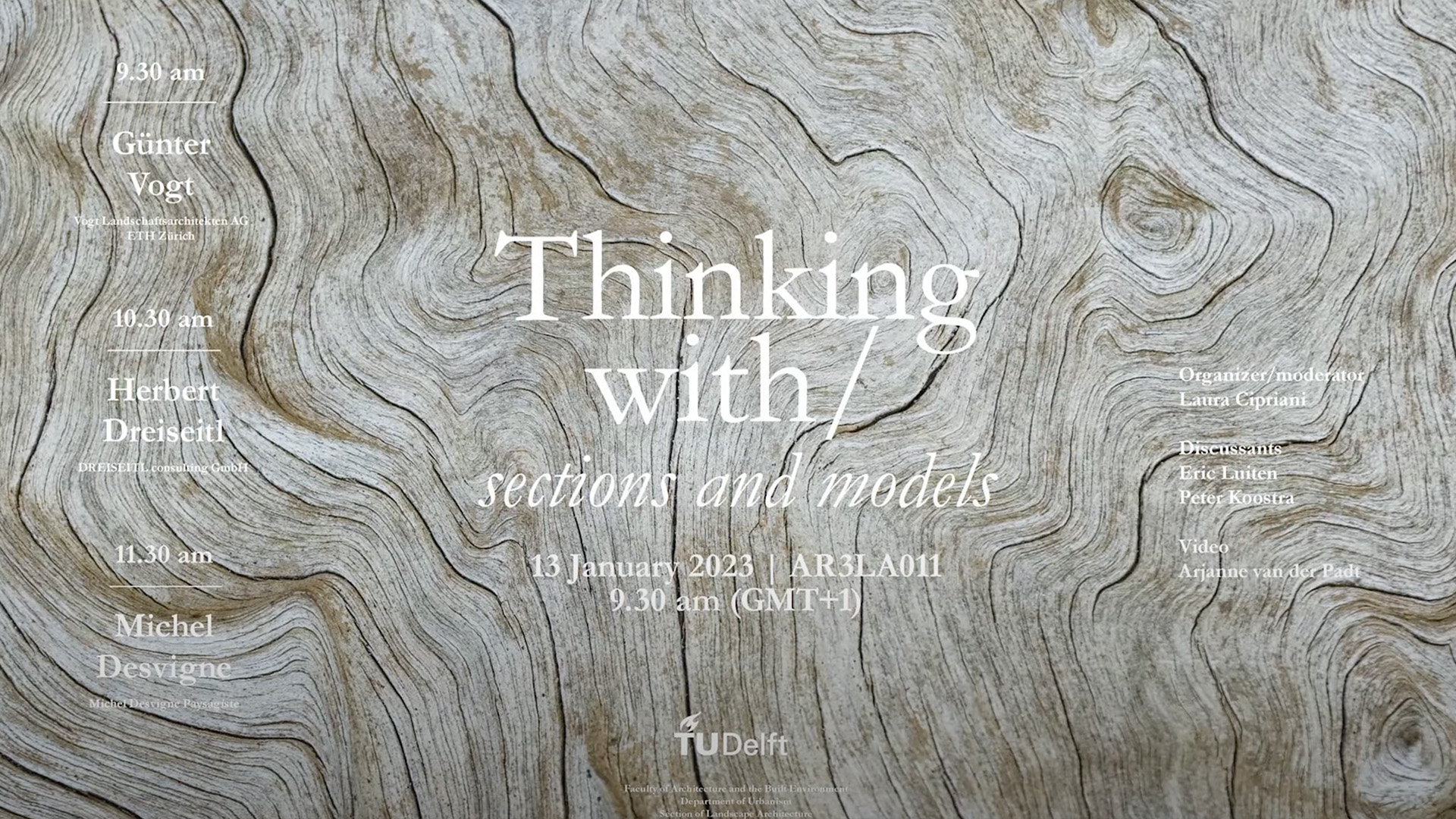

Part one of the lecture series "Thinking with sections and models" on 13 January 2023, with speaker Günter Vogt
Landscape architects mostly rely on maps or plans at various scale levels to study and represent ideas and proposals. The horizontal dimension of the landscape seems to be more significant than the vertical for representing spatial and temporal relationships.
There is a third dimension that plays a crucial role in landscape architecture, one that is useful for modeling terrain, understanding and shaping water and soil dynamics, designing visual perspectives, as well as conceptually, materially, and emotionally drafting, (co)designing, and verifying a project with different stakeholders. This conference addresses sections and models as tools for exploration, analysis, synthesis, and design in the field of landscape architecture and planning from the micro-scale to the territorial one.
Speakers: Günter Vogt, Dreiseitl Herbert, Michel Desvigne
Organizer/moderator: Laura Cipriani, TU Delft
Discussants: Peter Koorstra, Eric Luiten, TU Delft
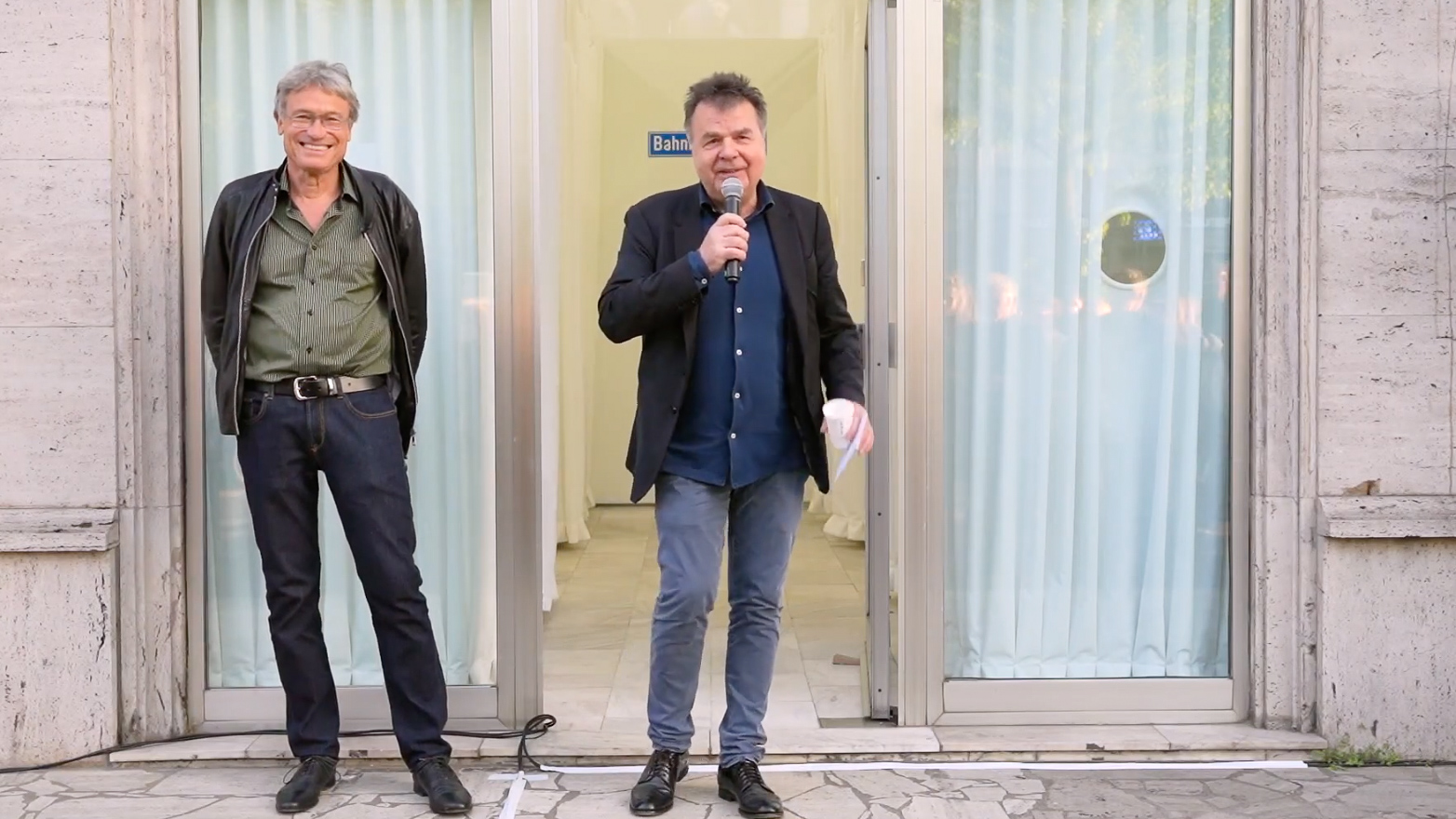

Opening evening of the exhibition «The Invisible Street» at the Architektur Galerie Berlin, with an introduction by Christian Schmid.
The street – once an essential element of the city and a spatial manifestation of the versatility and intensity of urban life – receives little attention in architecture and urban planning today. While the reconstruction of European streetscapes into car-oriented cities, especially after 1945, is being reassessed in many places, alternative uses and designs remain seldom. VOGT Landscape Architects supports this paradigm shift and expands earlier considerations to include the street as a central space for planning climate-adapted, sustainable, livable cities.
But what is a street? The exhibition addresses this question through a provocative exploration of four examples in cities where VOGT Landscape Architects has its offices: the Champs-Élysées in Paris, Whitechapel Road in London, Bahnhofstrasse in Zurich, and Karl-Marx-Allee in Berlin. For the exhibition, the streets’ condition and characteristics were documented in extensive field trips using magnifying glass and telescope, microphone and camera.
The results are presented so that exhibition visitors also have to go in search of what is not immediately visible. This proverbial “look behind the curtain” reveals unexpected insights into the street as a complex entity, in which space, people, flora, fauna, sounds, and smells mutually influence each other. This concept illustrates the philosophy of VOGT Landscape Architects, whose approach is characterised by an exchange between different disciplines and a knowledge-based design process.


A transformer station in front of the Raiffeisen office building in St.Gallen covered with a tuff stone block - a project by Kienast / Vogt from 2002. Over the years, moss and plants have grown on the tuff stone because of the high levels of moisture around the stone produced by water mist that is released at regular intervals.
The large, rectangular block of stone sometimes seems a little lost, appearing big and heavy in its setting. However, occasionally, an airy mist rises from the porous surface of the giant and dissolves the surroundings, erasing the hard contours of the architecture, thus transforming the rough piece of rock into a mysterious, playful island.
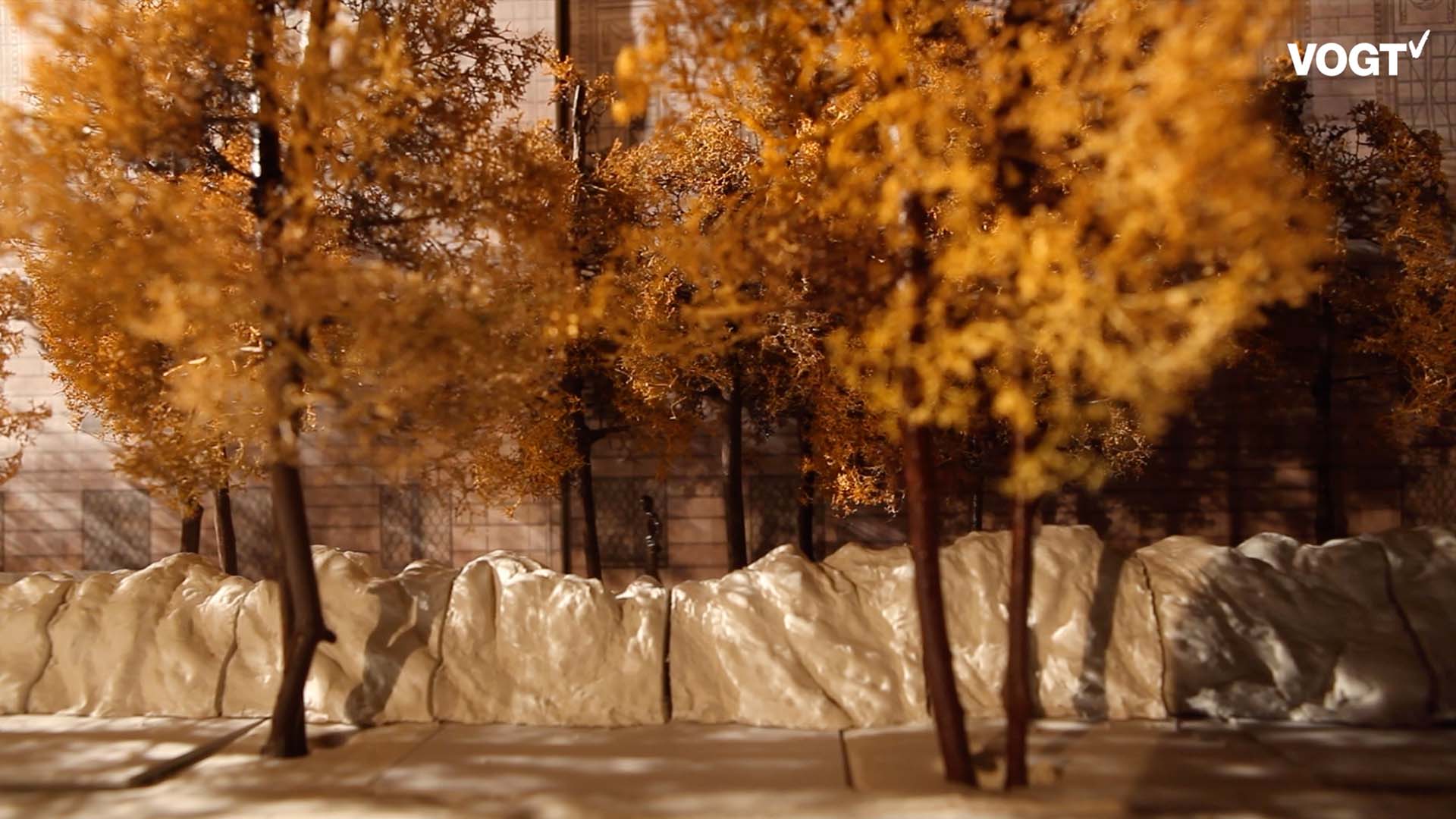

A condensed landscape miniature, which creates a game of close-up and long-distance views, the familiar and the alienated. Oversized, broken blocks of natural limestone form a miniature of an alpine panorama and at the same time serve as a surface. If pedestrians are in front of or behind this panorama, irritating correlations in scale arise for the viewer.
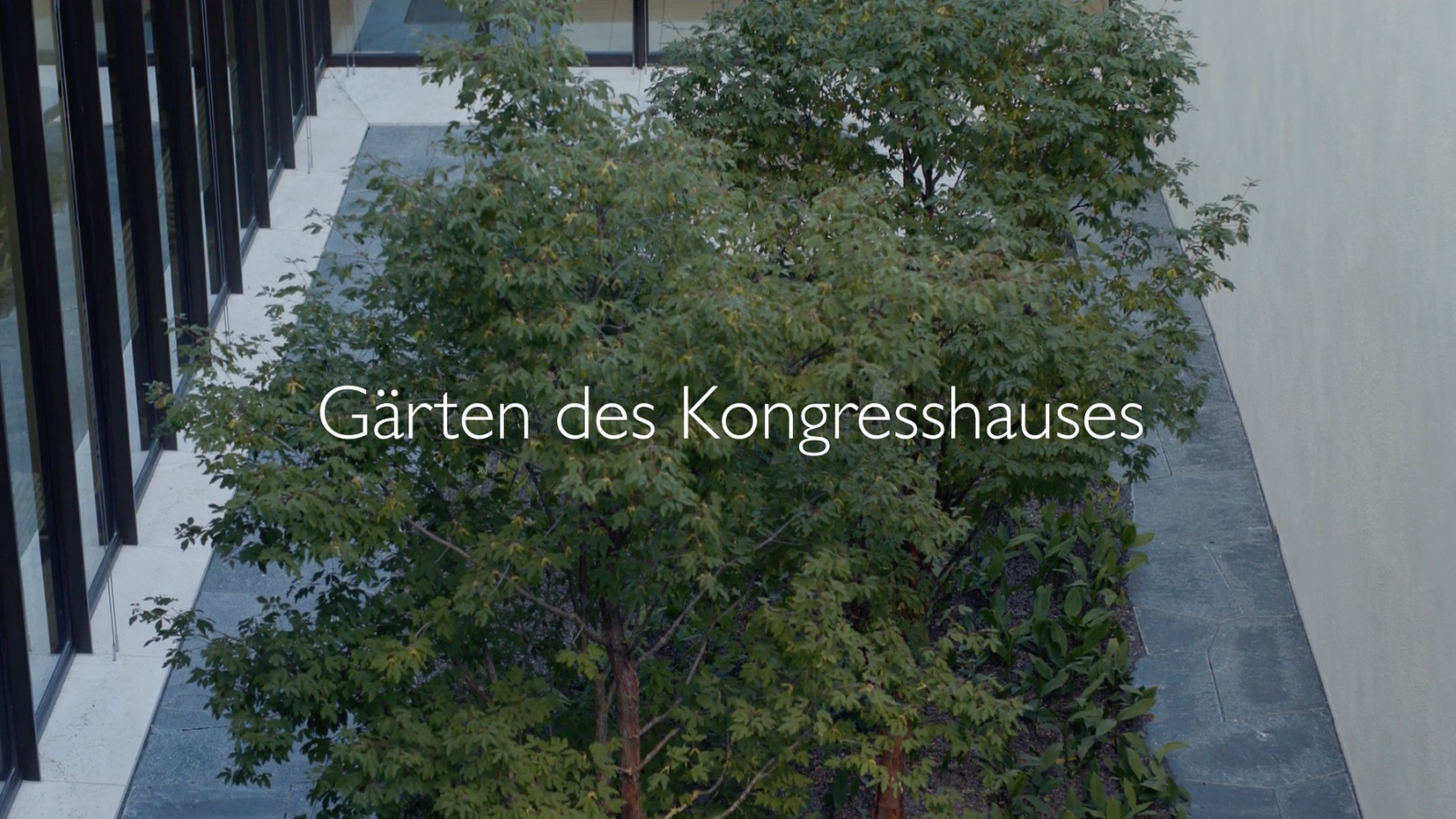

The interpenetration of nature and architecture is a defining element of the Kongresshaus. With the artwork "Masked Ball of Biodiversity" by the artists Steiner/Lenzlinger, "wild nature" also becomes a reference to the wild festivals celebrated here.
After four years of renovation and restoration, the Kongresshaus and Tonhalle Zurich will open their doors to the public in September 2021. In short video clips, you will learn exciting facts about the history of this unique ensemble, the extraordinary architecture, the extensive restoration work, and the role of monument preservation.
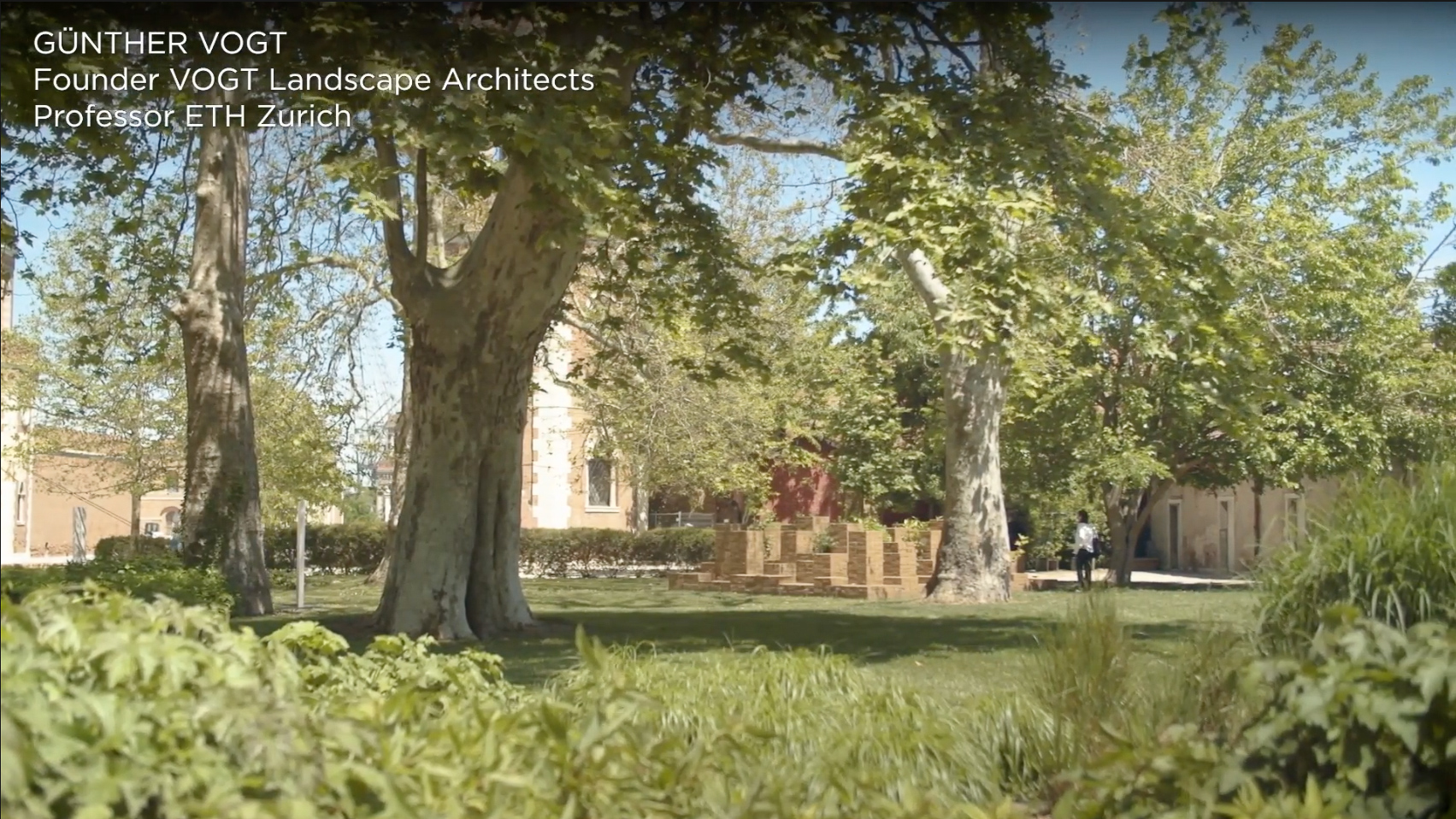

Günther Vogt founded Vogt Landscape Architects in 2000; the studio is based in Zurich, London and Berlin and has been realizing projects at diverse scales. In ‘Building Conversations’ Vogt talks about the evolution and value of landscapes.



The tones of any landscape, including urban landscapes, are unique in their diversity and composition. Collected plants and mineral materials are processed into pigments which can be used for models or watercolor paintings. A unique color palette is created that reflects the organic and mineral variety and reflects the seasonal characteristics of the locality.


Whether it's urban gardening, the revival of houseplants, or the debate about greened cities, landscape architecture's wallflower existence is over. This is partly thanks to Günther Vogt. With his offices in Berlin, London, Paris and Zurich, the landscape architect is shaping urban spaces around the globe. In addition, Vogt taught as a professor at the Institute for Landscape and Urban Studies at ETH. In an interview with Hannes Hug, Günther Vogt reveals what music is played in his Garden of Eden and what effect it has in the field of tension between green city and profitable buildings.
The conversation took place with Günther Vogt and Hannes Hug on swiss radio on the 12th of february 2023.
Tracks
Glenn Gould - A State if Wonder
The complete Goldberg Variations 1955 & 1981
Home Of The Brave. A film by Laurie Anderson
Label: Warner Bros. Records
Zehnder – Kraah
Label: Alpentöne Records
Tom Waits - Blood Money
Label: Anti, Inc. Epitaph Europe
Ludwig van Beethoven - Pastorale. Claire Huangci
Label: Berlin Classics



Wettbewerbsgewinn Studienauftrag im Varianzverfahren «Destination Jelmoli – Dachlandschaft» – Die Komplexität und die verschiedenen historischen Zeitschichten des Gebäudes sowie die zahlreichen Anforderungen an den Freiraum – wie Kühlung, Wasserrückhaltevolumen und die Schaffung von Räumlichkeit – stellten uns vor die Herausforderung, einen Ort zu gestalten, der nicht nur funktional ist, sondern auch einen Mehrwert für die Besucher bietet.
Beim Entwurf der Dachlandschaft war die Arbeit am Modell entscheidend, um die Geometrie mit ihren Höhenunterschieden und den zwei Ebenen zu begreifen. Die Kombination digitaler Methoden – wie Drohnen- und Wärmebildaufnahmen, Renderings und Punktwolkenmodellen – mit analogem Arbeiten, etwa durch Diskussionen am Modell, Skizzen und fundierte Literaturrecherche, ermöglichte es uns, die komplexen Aspekte der Dachterrasse zu verstehen und zu gestalten.
Die Dachlandschaft von Jelmoli soll ein öffentlich zugänglicher, einladender Ort der Begegnung werden, an dem Menschen aus verschiedenen Lebensbereichen zusammenkommen. Statt die Stadt aus dem gewohnten Blickwinkel der Strasse zu erleben, bietet dieser Ort mitten in Zürich die Möglichkeit, die Skyline und die umliegende Landschaft aus einer neuen Perspektive zu geniessen.


Prof. em. DR. DDr. hc. Christian Körner joined our Teaching and gave a lecture about the urban green and carbon cycle. He is teaching diversity and structure of plants, plant physiological ecology and systems ecology, geobotany (ongoing), alpine ecology graduate courses (ongoing) at the University of Basel.
Research projects: The influence of increasing atmospheric CO2 concentration on natural vegetation (incl. Swiss Canopy Crane project SCC in a mature forest), alpine plant ecology and biodiversity, the global high elevation treeline phenomenon, implications of climate change in the Mediterranean, various projects in bioclimatology, ERC advanced grant TREELIM exploring causes of tree species range limits in Europe (2009-2014). Long-term monitoring, Alpine Research Station ALPFOR on Swiss Furkapass.
in: https://duw.unibas.ch/de/koerner/


Wie die Alpen zur Seenlandschaft werden | Werden Bergtäler zunehmend von Felsstürzen bedroht? | Das öffentliche Angebot der ETH Zürich | Die Universität für alle | Mehr Infos auf https://www.treffpunkt.ethz.ch
Vortrag gehalten von Thomas Kissling, in der Bürogesamtleitung von Vogt Landschaftsarchitekten und ein ETH-Forscher bei der Professur Günther Vogt am Departement Architektur.
Der Alpenraum ist mit einer raschen Veränderung konfrontiert. Der Rückgang der Gletscher, das Auftauen des Permafrostes und die Verschiebung der Vegetationsgrenze verdeutlichen eindrücklich die Anfälligkeit des Bergmassivs. Es stellt sich die Frage, wie wir die Alpen in Zukunft nutzen möchten: Sind sie vor allem Lieferant für den wachsenden Strombedarf oder Urlaubsziel für den Tourismus? Welche Flächen sollen komplett geschützt werden? Landschaftsprofile bieten wertvolle Hinweise für die Neugestaltung des Alpenraums.


A transformer station in front of the Raiffeisen office building in St.Gallen covered with a tuff stone block - a project by Kienast / Vogt from 2002. Over the years, moss and plants have grown on the tuff stone because of the high levels of moisture around the stone produced by water mist that is released at regular intervals.
The large, rectangular block of stone sometimes seems a little lost, appearing big and heavy in its setting. However, occasionally, an airy mist rises from the porous surface of the giant and dissolves the surroundings, erasing the hard contours of the architecture, thus transforming the rough piece of rock into a mysterious, playful island.


Some glimpses from the Vogt Zurich office. Drawing inspiration from the Wardian case, we have developed a petite greenhouse for the VOGT kitchen, not solely for the purpose of storing collected plants but also for growing fresh herbs, especially chili plants, to use as ingredients for our kitchen and lunch breaks. The care and maintenance of the plants growing inside are automated – the lightening is regulated by a timer, and the watering by an analog irrigation system that operates based on the laws of physics. Thus, the original Wardian case, conceived as a showcase for collected plants, now serves as an appreciated herb garden in the VOGT kitchen.


Today, 9.6.2023, we commemorate the 20th anniversary of the Masoala rainforest’s existence in Zurich. We would like to thank the client, Zoo Zurich, for their trusted collaboration. Also, we greatly appreciate all the curious visitors. A member of our Case Studio team has captured the current state of the Masoala rainforest in this video. Immerse into these awe-inspiring wonders of nature.
The main principle of the jungle, with its multi-layered, lush intricate plant life, is embodied in the design of the topography, water and pathways. The most important and striking component of the rainforest is the tropical vegetation, which provides a habitat for a diverse array of animals. Among them are lemurs, birds, frogs, reptiles such as chameleons, turtles, geckos and fishes. Can you spot them in the video?


"It has been 20 years since our vision became reality: On June 30, 2003, the Masoala Rainforest opened its doors at Zurich Zoo. A mini-image of its Madagascan counterpart, it has since served as a conservation ambassador, drawing attention to endangered animal and plant species and transporting guests to a green oasis. Back in 1992, the then director of Zurich Zoo, Dr. Alex Rübel, decided to build a habitat directly related to a wildlife conservation project as part of his master plan. The choice fell on the Masoala peninsula in Madagascar. After objections, the symbolic groundbreaking ceremony was held on March 13, 2001. In 2003, the Zurich Zoo opened the Masoala Rainforest with many celebrities. This year the Masoala Rainforest celebrates its 20th anniversary. We look back and forward."
Text Zoo Zurich


Whether it's urban gardening, the revival of houseplants, or the debate about greened cities, landscape architecture's wallflower existence is over. This is partly thanks to Günther Vogt. With his offices in Berlin, London, Paris and Zurich, the landscape architect is shaping urban spaces around the globe. In addition, Vogt taught as a professor at the Institute for Landscape and Urban Studies at ETH. In an interview with Hannes Hug, Günther Vogt reveals what music is played in his Garden of Eden and what effect it has in the field of tension between green city and profitable buildings.
The conversation took place with Günther Vogt and Hannes Hug on swiss radio on the 12th of february 2023.
Tracks
Glenn Gould - A State if Wonder
The complete Goldberg Variations 1955 & 1981
Home Of The Brave. A film by Laurie Anderson
Label: Warner Bros. Records
Zehnder – Kraah
Label: Alpentöne Records
Tom Waits - Blood Money
Label: Anti, Inc. Epitaph Europe
Ludwig van Beethoven - Pastorale. Claire Huangci
Label: Berlin Classics


Part one of the lecture series "Thinking with sections and models" on 13 January 2023, with speaker Günter Vogt
Landscape architects mostly rely on maps or plans at various scale levels to study and represent ideas and proposals. The horizontal dimension of the landscape seems to be more significant than the vertical for representing spatial and temporal relationships.
There is a third dimension that plays a crucial role in landscape architecture, one that is useful for modeling terrain, understanding and shaping water and soil dynamics, designing visual perspectives, as well as conceptually, materially, and emotionally drafting, (co)designing, and verifying a project with different stakeholders. This conference addresses sections and models as tools for exploration, analysis, synthesis, and design in the field of landscape architecture and planning from the micro-scale to the territorial one.
Speakers: Günter Vogt, Dreiseitl Herbert, Michel Desvigne
Organizer/moderator: Laura Cipriani, TU Delft
Discussants: Peter Koorstra, Eric Luiten, TU Delft
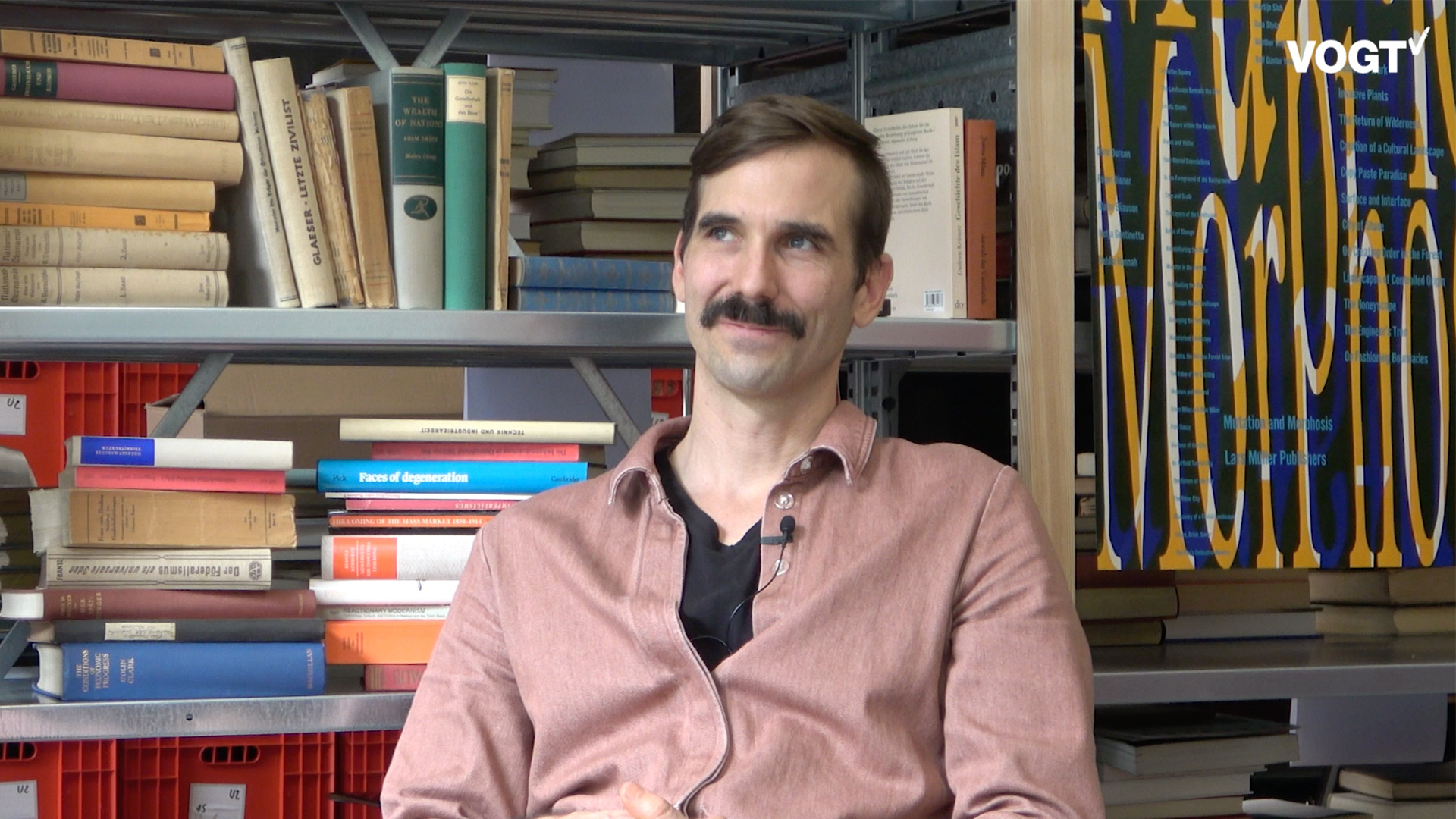

Dafi Kühne is a graphic designer and letterpress print maker from Zürich + Glarus, Switzerland. Since 2009 his studio "babyinktwice" has been designing and printing poster, invitation cards and brochures for music, art, architecture, theater and film projects and also for products. Since 2011 Dafi Kühne has also been teaching everything from short workshops to full semesters in various universities in Europe and the United States.
He designed and printed the poster "Common Water - The Future of an Alpine Resource" for the Chair of Günther Vogt at ETH Zürich in 2017 and 2019 Dafi Kühne explores with a typographic poster "Mutation/Morphosis" the reading structure of the book Mutation and Morphosis.
References:
Text babyinktwice
www.babyinktwice.ch
www.typographic-printing-program.com
https://www.instagram.com/dafikuhne
The Dafi Kühne Printing Show™:
www.vimeo.com/channels/printingshow


Günther Vogt founded Vogt Landscape Architects in 2000; the studio is based in Zurich, London and Berlin and has been realizing projects at diverse scales. In ‘Building Conversations’ Vogt talks about the evolution and value of landscapes.


A condensed landscape miniature, which creates a game of close-up and long-distance views, the familiar and the alienated. Oversized, broken blocks of natural limestone form a miniature of an alpine panorama and at the same time serve as a surface. If pedestrians are in front of or behind this panorama, irritating correlations in scale arise for the viewer.


Opening evening of the exhibition «The Invisible Street» at the Architektur Galerie Berlin, with an introduction by Christian Schmid.
The street – once an essential element of the city and a spatial manifestation of the versatility and intensity of urban life – receives little attention in architecture and urban planning today. While the reconstruction of European streetscapes into car-oriented cities, especially after 1945, is being reassessed in many places, alternative uses and designs remain seldom. VOGT Landscape Architects supports this paradigm shift and expands earlier considerations to include the street as a central space for planning climate-adapted, sustainable, livable cities.
But what is a street? The exhibition addresses this question through a provocative exploration of four examples in cities where VOGT Landscape Architects has its offices: the Champs-Élysées in Paris, Whitechapel Road in London, Bahnhofstrasse in Zurich, and Karl-Marx-Allee in Berlin. For the exhibition, the streets’ condition and characteristics were documented in extensive field trips using magnifying glass and telescope, microphone and camera.
The results are presented so that exhibition visitors also have to go in search of what is not immediately visible. This proverbial “look behind the curtain” reveals unexpected insights into the street as a complex entity, in which space, people, flora, fauna, sounds, and smells mutually influence each other. This concept illustrates the philosophy of VOGT Landscape Architects, whose approach is characterised by an exchange between different disciplines and a knowledge-based design process.
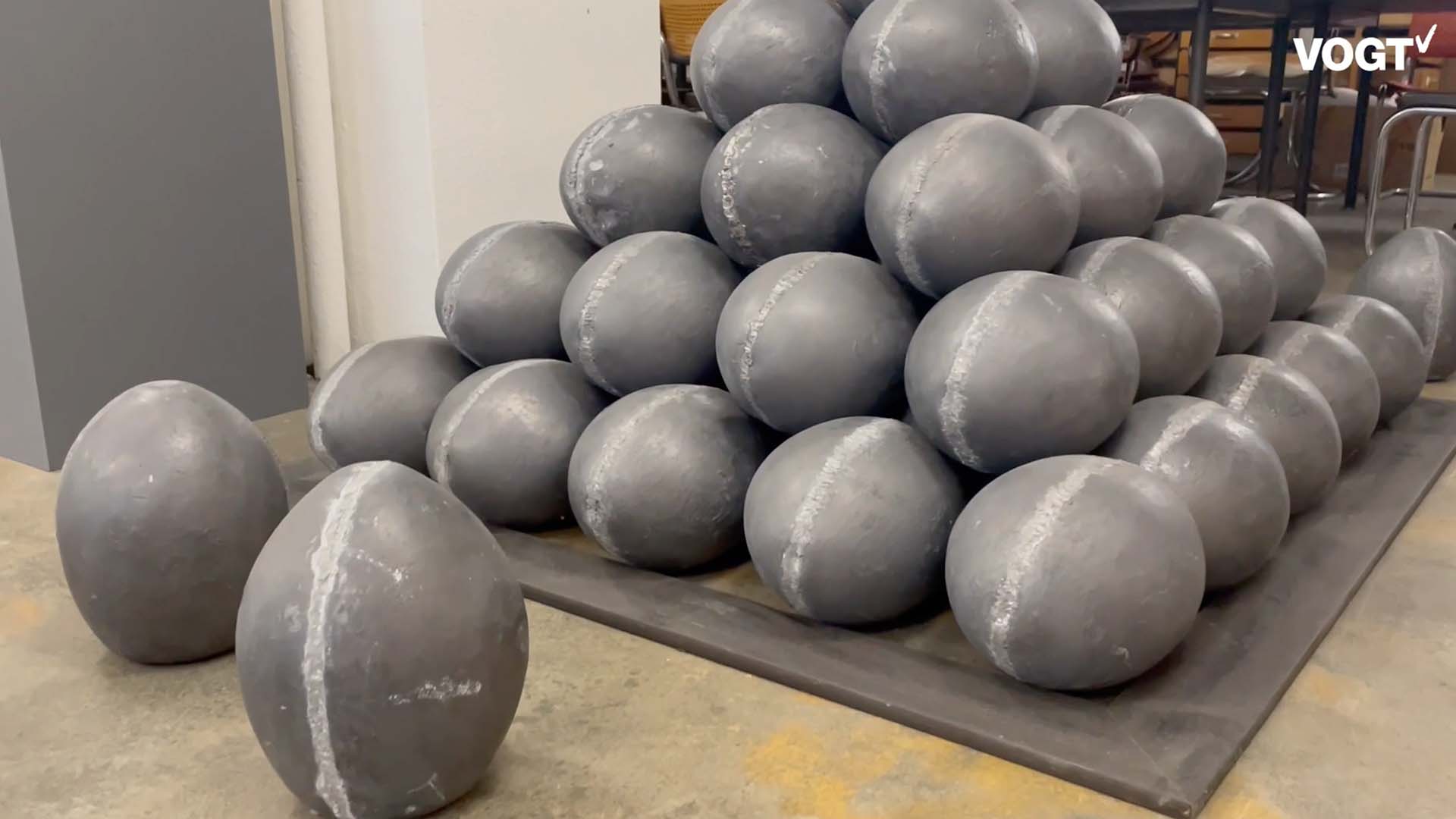

Pacific Fiction - Study for Monument is a sculpture which serves as a putative model for a future memorial paying tribute to the people of the Marshall Islands and their suffering brought upon by the nuclear tests conducted by the United States government as a part of the Nuclear Arms Race. The work incorporates a pile of coconuts encased in lead symbolizing the traumatic embrace of this region by the atomic project; the lead coating suggestive of smothering –registering a profound colonial imposition. In addition to this, the sculpture reflects upon safety and hope: in physical terms, lead “contains” the danger posed by the radiation present within the coconuts. The pyramid form further recalls a stockpile of cannonballs –this “fruit” of atomic knowledge standing ready for deployment, for good or ill. But it also invokes a tomb, like the pyramids of Egypt, and the deathly architecture of the bunkers on the shores of Bikini’s Atoll from which scientists observed their nuclear tests.
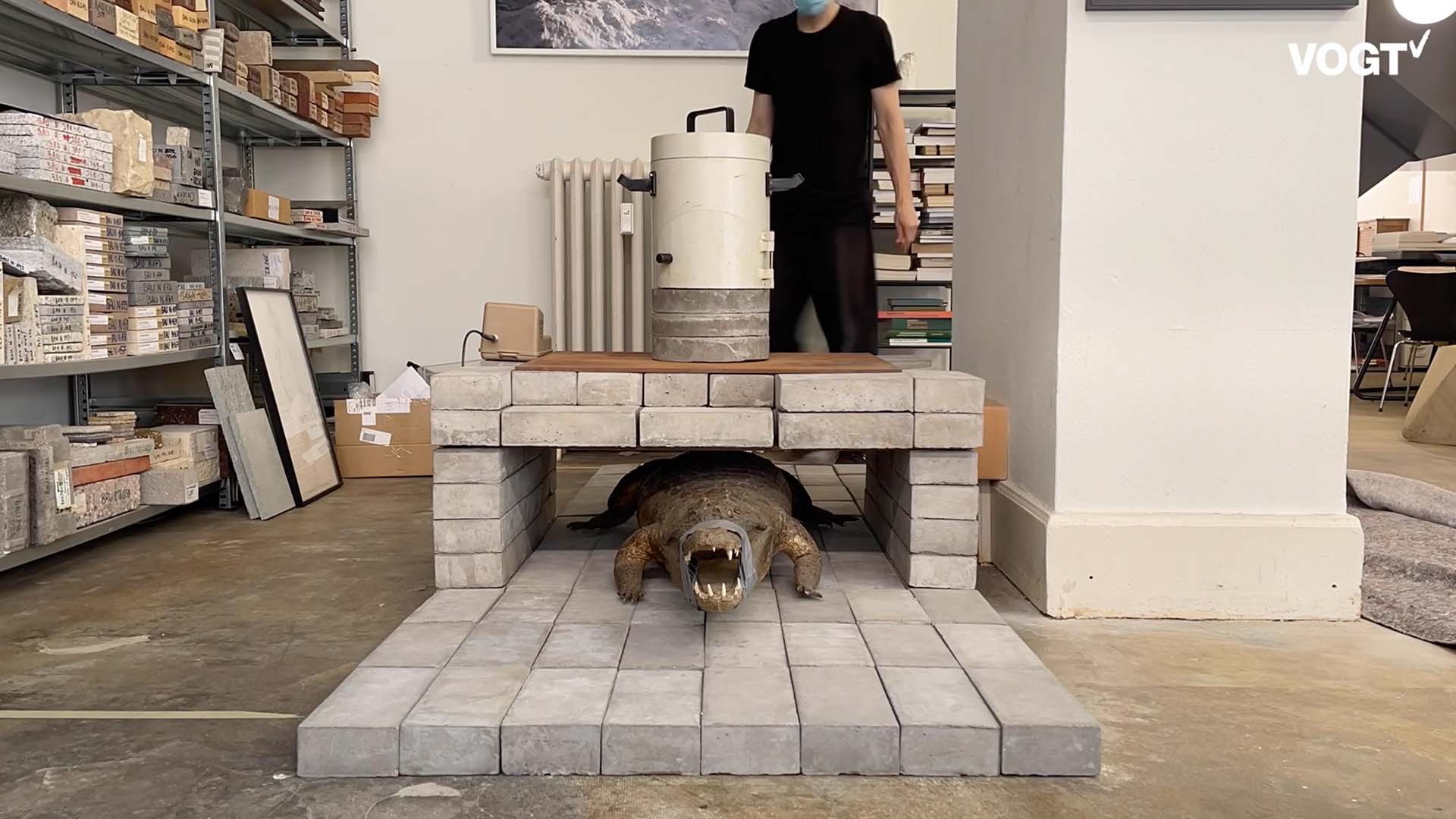

‘Savannah Shed’ is an artistic reconstruction of the ad-hoc contraption American scientists came up with in 1964 to measure the level of radiation of an alligator following an accident at the Savannah River Site nuclear reservation in South Carolina.



The tones of any landscape, including urban landscapes, are unique in their diversity and composition. Collected plants and mineral materials are processed into pigments which can be used for models or watercolor paintings. A unique color palette is created that reflects the organic and mineral variety and reflects the seasonal characteristics of the locality.
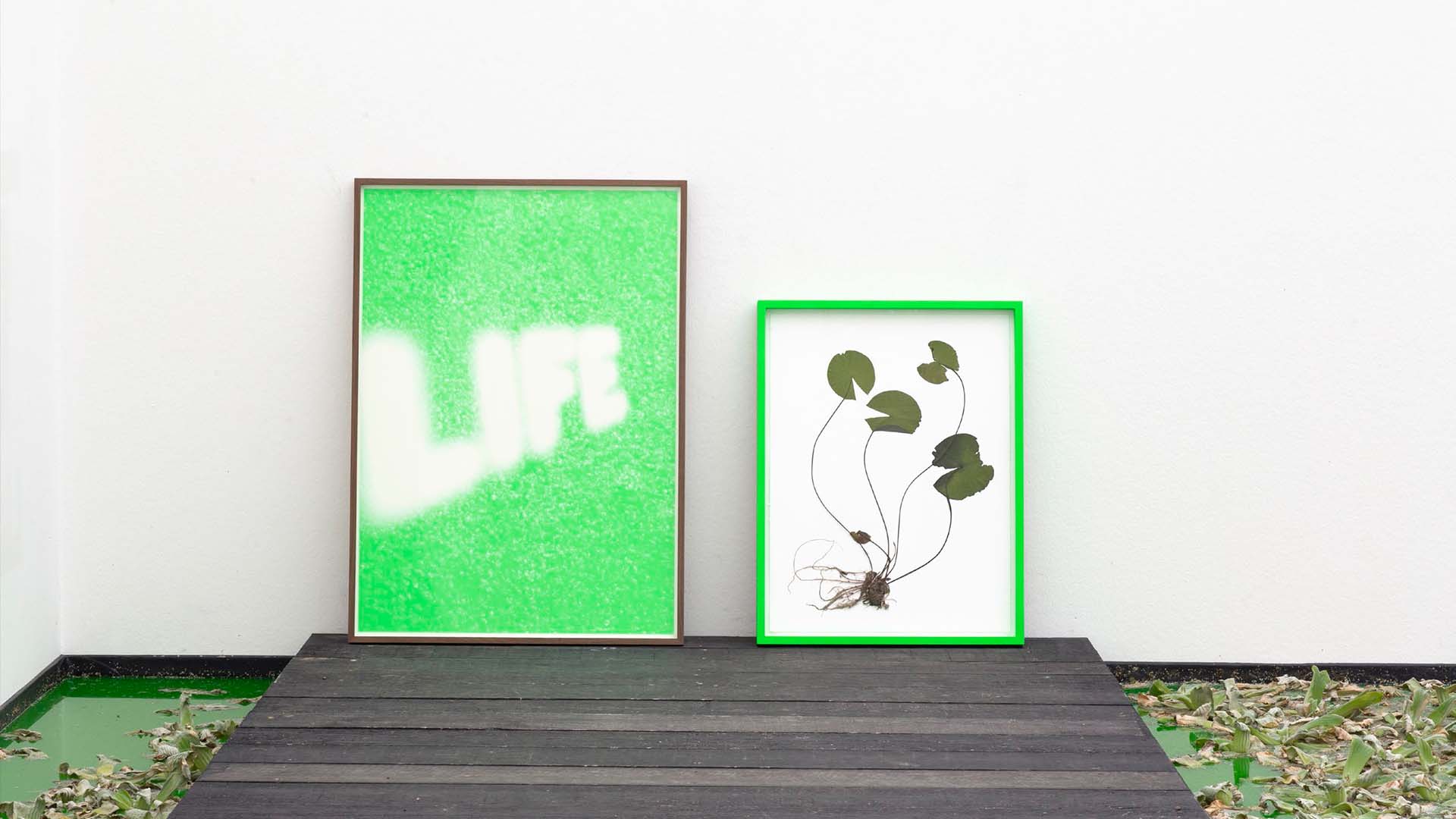

In 2021 the exhibition LIFE at the Fondation Beyeler by Olafur Eliasson and VOGT invited the wild and unexpected into the heart of the gallery. Within the flooded rooms, nearly a dozen species of water plants gently float in radiant green water. On the occasion of the exhibition an exclusive edition of pressed water lilies had been developed in close collaboration with the artist. The process of pressing and preserving plants is a recurring design tool at VOGT.
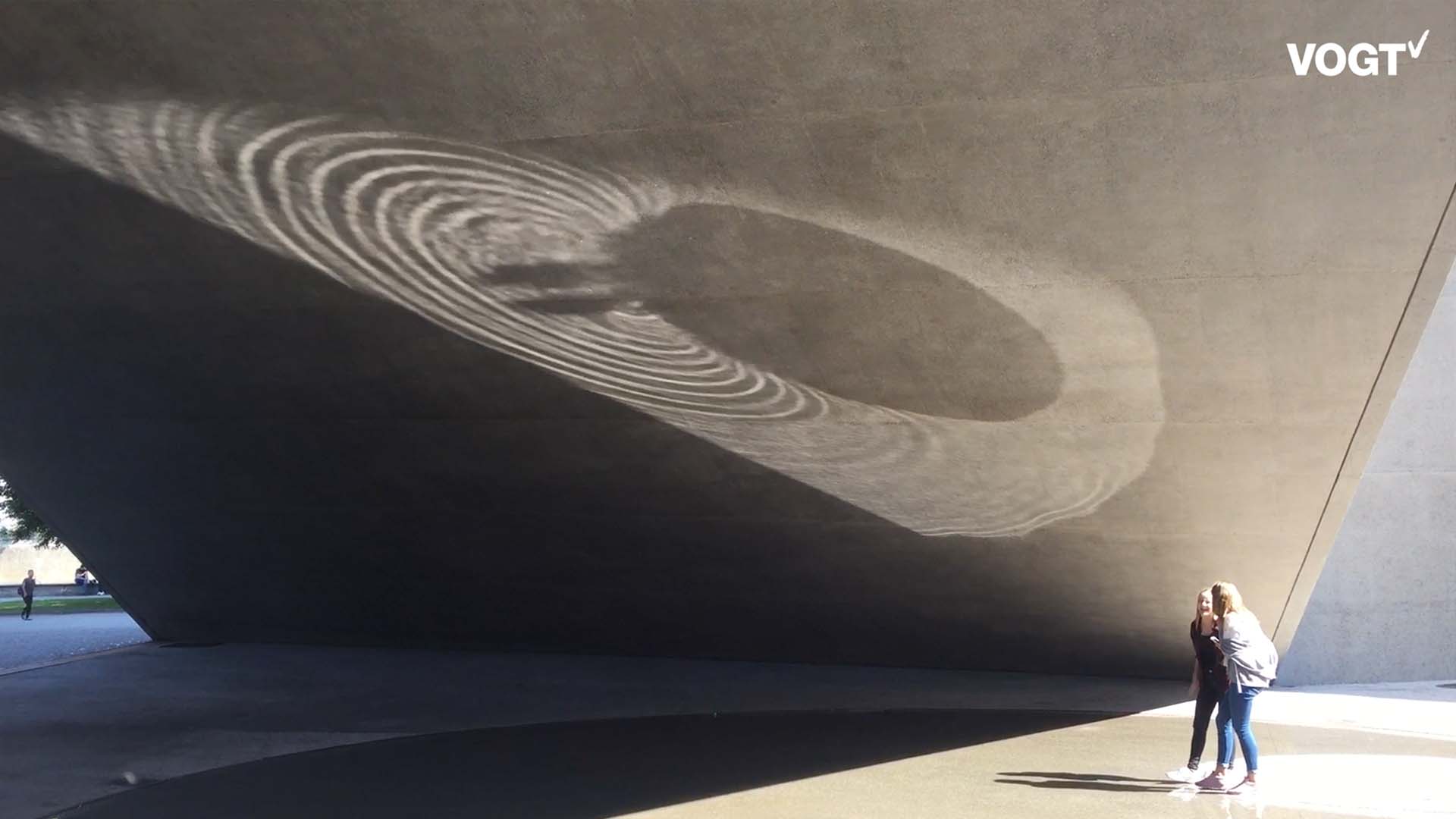

A water feature below the new building of the Swiss National Museum, which opened in 2016, refers to the nature of the city and the two rivers Sihl and Limmat, which converge a few meters further at the Platzspitz Park.
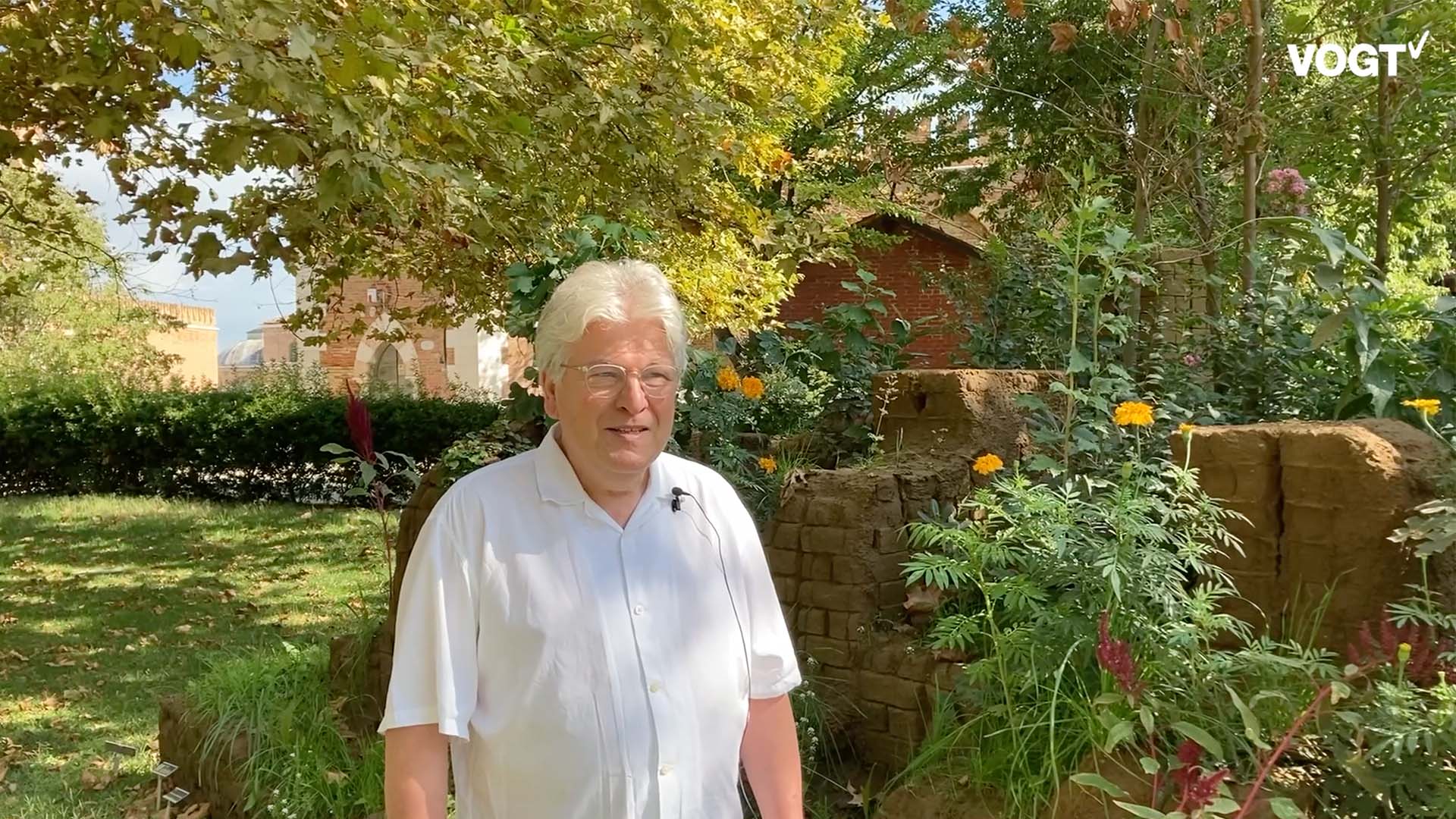

The Alps are not an immovable mountain massif that will outlast everything else but a dynamic and sensitive organism. For millions of years, everything has been in motion, and everything has been flowing. Against this backdrop, mankind’s period of influence seems vanishingly short. Nevertheless, Homo sapiens is the driving force that reshaped the Alps quite significantly and within a very short time. However, this comparatively rapid change of the Alps does not only hold dangers, but also offers a whole range of new potentials.
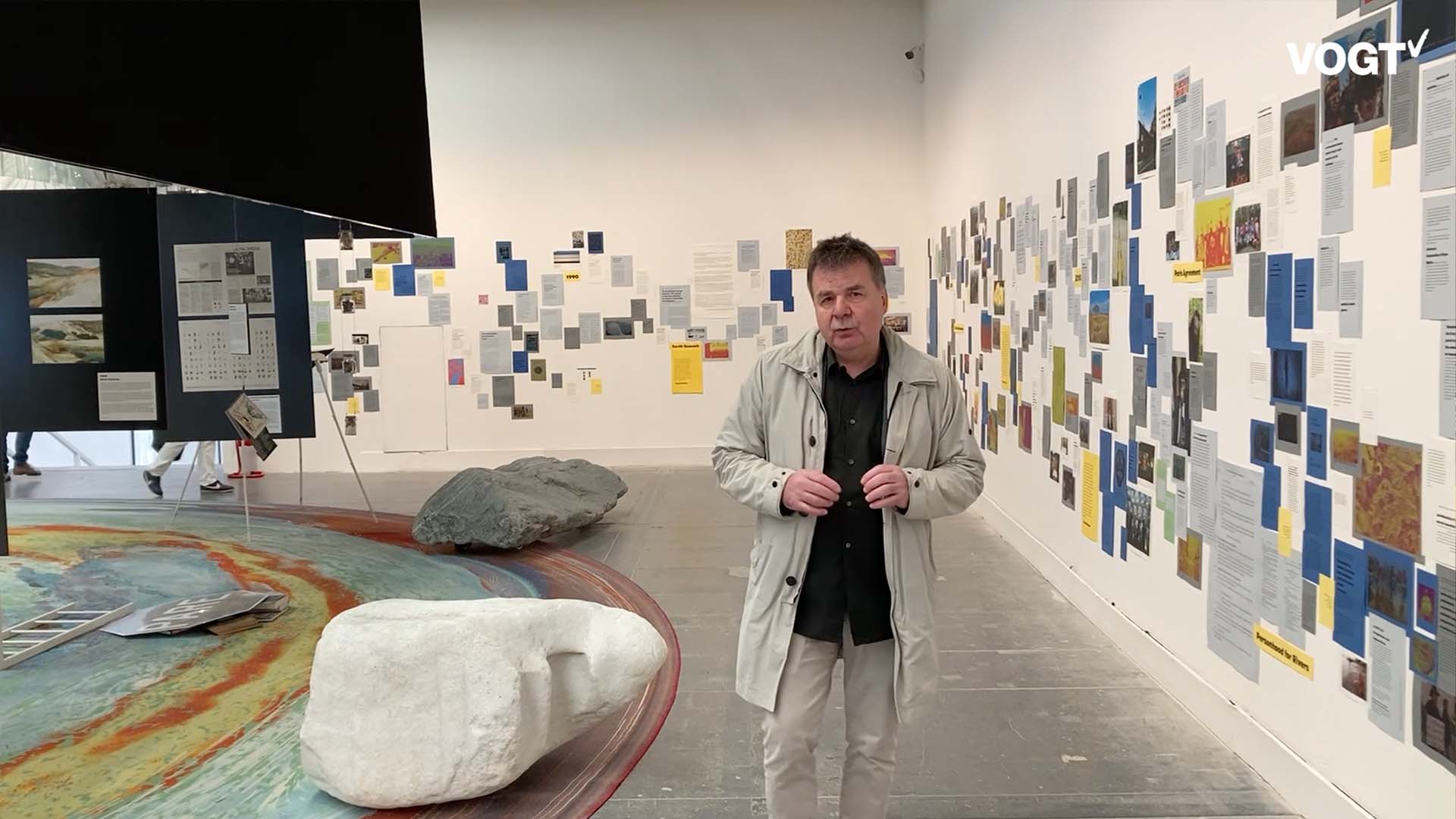

The Alps are not an immovable mountain massif that will outlast everything else but a dynamic and sensitive organism. For millions of years, everything has been in motion, and everything has been flowing. Against this backdrop, mankind’s period of influence seems vanishingly short. Nevertheless, Homo sapiens is the driving force that reshaped the Alps quite significantly and within a very short time. However, this comparatively rapid change of the Alps does not only hold dangers, but also offers a whole range of new potentials.
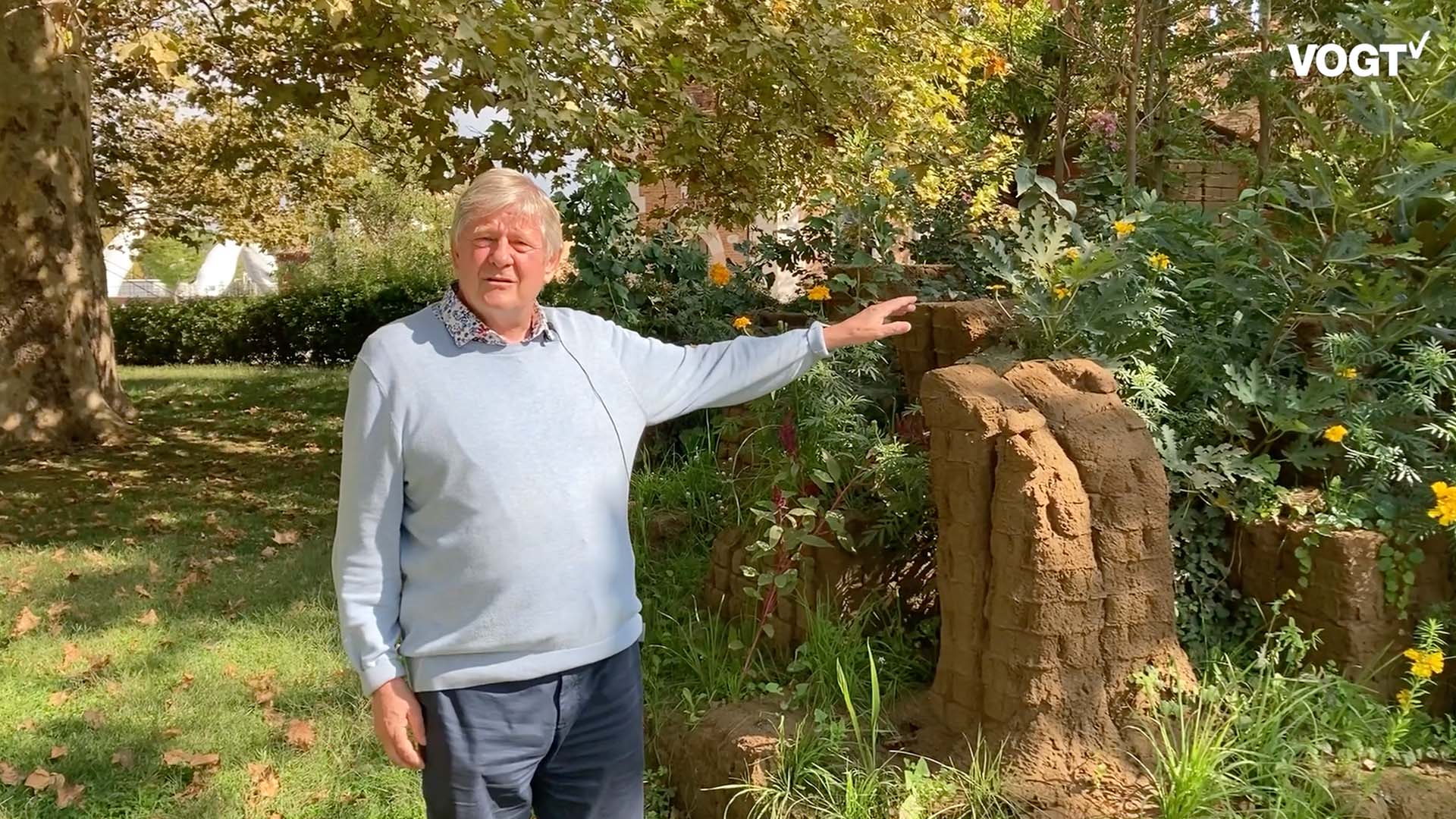

The Alps are not an immovable mountain massif that will outlast everything else but a dynamic and sensitive organism. For millions of years, everything has been in motion, and everything has been flowing. Against this backdrop, mankind’s period of influence seems vanishingly short. Nevertheless, Homo sapiens is the driving force that reshaped the Alps quite significantly and within a very short time. However, this comparatively rapid change of the Alps does not only hold dangers, but also offers a whole range of new potentials.
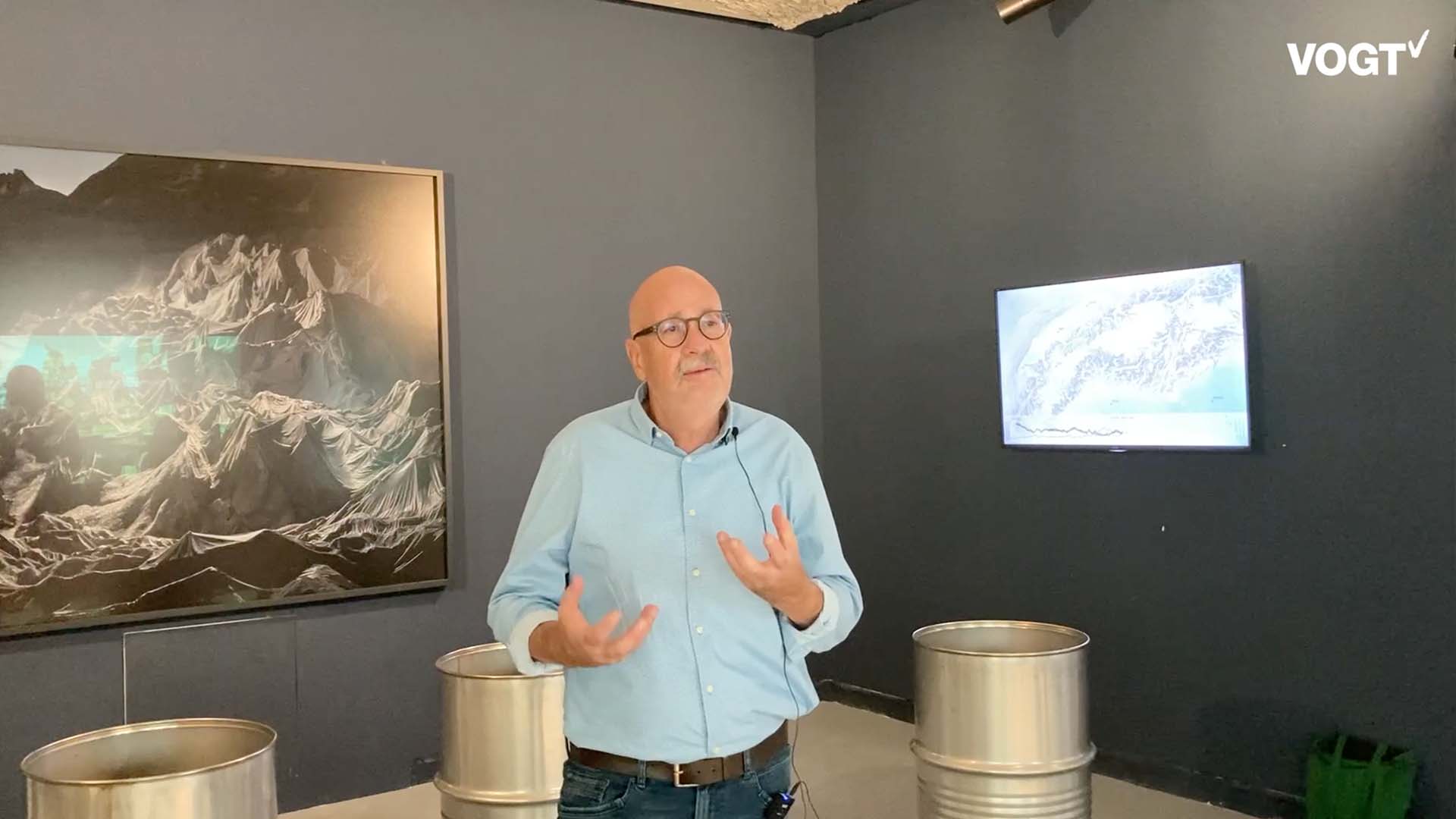

The Alps are not an immovable mountain massif that will outlast everything else but a dynamic and sensitive organism. For millions of years, everything has been in motion, and everything has been flowing. Against this backdrop, mankind’s period of influence seems vanishingly short. Nevertheless, Homo sapiens is the driving force that reshaped the Alps quite significantly and within a very short time. However, this comparatively rapid change of the Alps does not only hold dangers, but also offers a whole range of new potentials.
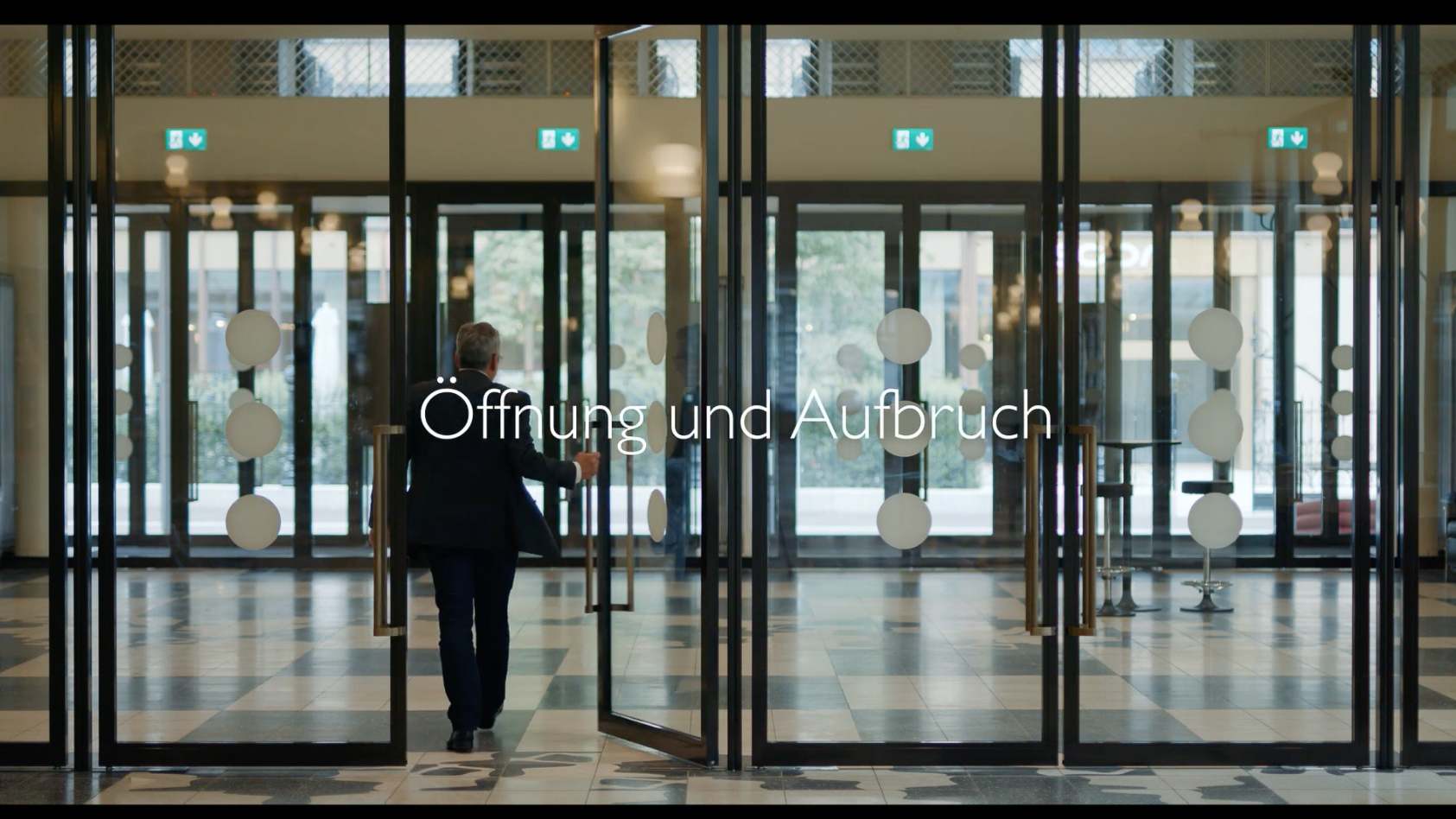

The interventions of the 1980s were largely reversed with the current conversion project. The ensemble once again radiates the openness, permeability and generosity of the 1930s. Today, the building complex is once again freely accessible to the public with direct stair access from the street to the public terrace and the restaurant.
After four years of renovation and restoration, the Kongresshaus and Tonhalle Zurich will open their doors to the public in September 2021. In short video clips, you will learn exciting facts about the history of this unique ensemble, the extraordinary architecture, the extensive restoration work, and the role of monument preservation.


The interpenetration of nature and architecture is a defining element of the Kongresshaus. With the artwork "Masked Ball of Biodiversity" by the artists Steiner/Lenzlinger, "wild nature" also becomes a reference to the wild festivals celebrated here.
After four years of renovation and restoration, the Kongresshaus and Tonhalle Zurich will open their doors to the public in September 2021. In short video clips, you will learn exciting facts about the history of this unique ensemble, the extraordinary architecture, the extensive restoration work, and the role of monument preservation.
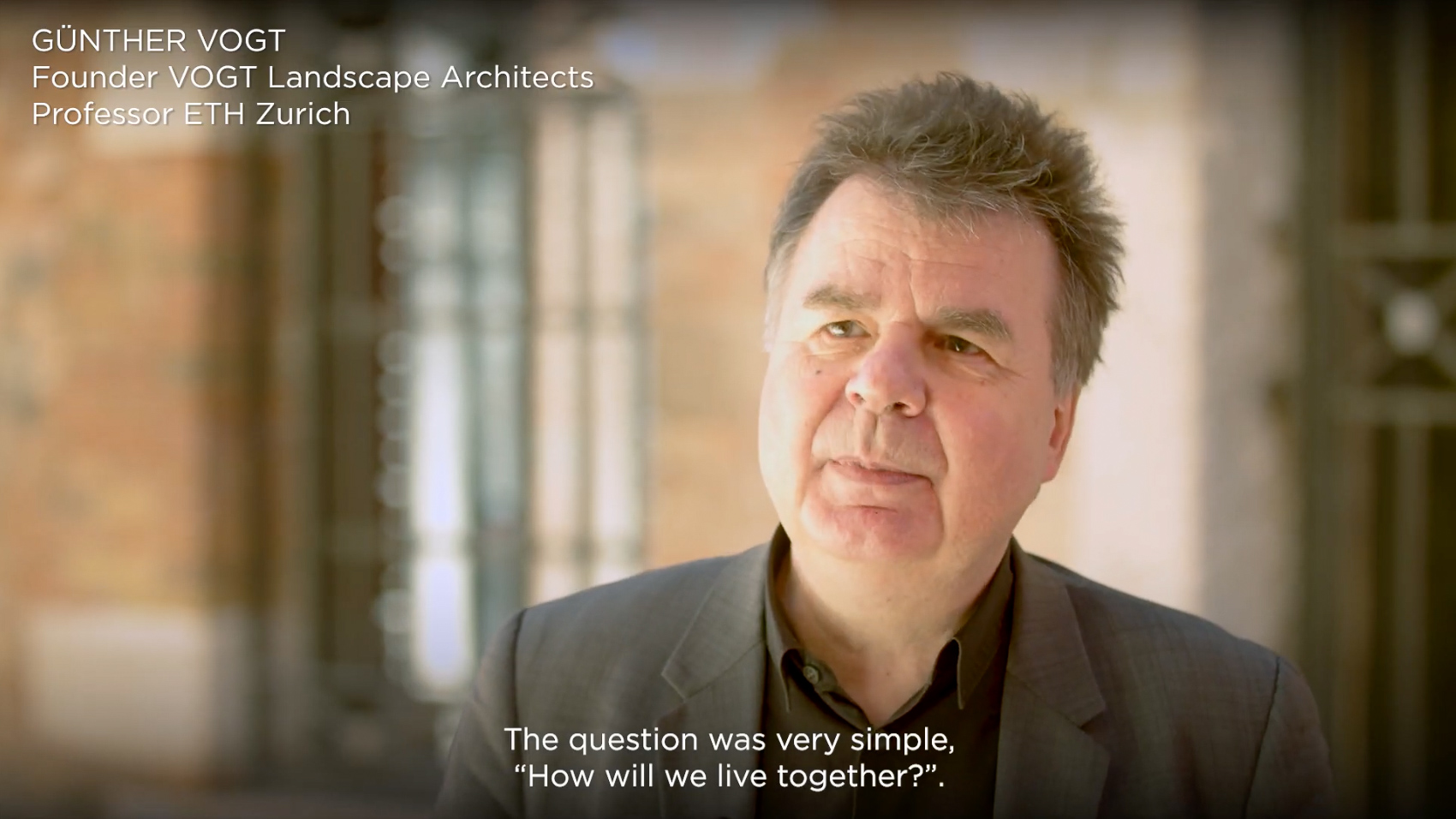

Günther Vogt founded Vogt Landscape Architects in 2000; the studio is based in Zurich, London and Berlin and has been realizing projects at diverse scales. In ‘Building Conversations’ Vogt talks about the evolution and value of landscapes.



STIR interacts with Günther Vogt about his studio’s displays at the Venice Architecture Biennale: Rolling Stones, Migrating Landscapes, and Common Water – The Alps.
by Anmol Ahuja
The IPCC climate report, just a few days ago, essentially sounded a death knell for the human populace, even if it was decades down the line, with the impacts of the global climate emergency worsening every year. Terms like “code red for humanity”, and sermons to the tone of “enjoying it while it lasts” were screamed by media tabloids, and for the right reason. While the planet is bound to get hotter every year, no contest, even by conservative estimates, it would take some serious doing to attain a neutrality with respect to our carbon outage, let alone reversing the damage. The answer then, to curator Hashim Sarkis' question at the Venice Architecture Biennale 2021, must encompass how will we live together with these conditions as precedence, or, well, providence. Renowned Swiss landscape architect and designer, Günther Vogt’s showcase at Venice this year interestingly encapsulates the issue with a very specific geography, and while its context might be local to the European region, its findings and observations are global. Through three exhibitions put together jointly by his studio, VOGT Landscape Architects, and his chair at ETH, Zurich, the problems of our times are looked at through the lens of three basal elements in landscape: stone, water, and vegetation. It won’t be an overstatement to term these basal elements as not just the building blocks of any landscape, native or foreign, but as something essential to forming the systems that sustain our survival.
The climate catastrophe, and catastrophe it is, looking at the number of casualties and displacements in habitat caused just this year by raging forest fires and flash floods across the world, has accelerated the process of transformation of our landscapes, something that is supposed to be a gradual and cyclical shift. The very pertinent question then, what this means for the coexistence of societies, across and within borders, assumes centrestage. This gains even greater prominence given the events of the last two years collectively reinforcing the need for rejuvenation of landscape systems, while the geographies of our borders came to be redefined in darker ink. Through Rolling Stones, Migrating Landscapes, and Common Water – The Alps, the team at VOGT Landscape Architects poses important but allegorical questions; questions that beget thinking rather than providing straight answers.
Migrating Landscapes focuses on the expatriation of plant species, their migration to a foreign landscape, and the larger impact it is bound to have on native plant species and their perceptibly semi-fluid ecosystem there. VOGT refers to these species as “invasive”, but alludes to this invasion as a pre-requisite for studying or observing any landscape. Emulating the model of a city and its topography, Migrating Landscapes in the Biennale’s Giardini comprises a scaled “urban landscape” made of hard pressed bricks of soil from different regions of the city, offering an architectural material mapping of a region whose flora, like that of the world, is constantly changing. Rife with metaphor, the morphology of the installation is almost disrupted by the introduction of a large, deciduous tree that has, for ages, formed the centre of landscape intervention in public spaces: the Platanus Hispanica. As the tree grows and makes its roots through the “city”, introducing cracks in the soil, landscape and architecture become one, as Venice’s “synthetic history of ecological change and manipulation of land” is brought alive.
Through the second display, sharing its name with the legendary English rock band, VOGT ascribes rocks with a cultural agency as opposed to their identity as solid, immovable objects. Shunning their classification as “inert”, the display sees native rocks lined with wheels, now making them movable with just a touch. Crossing over into the realm of installation art, Rolling Stones forms part of the Biennale’s “exhibition within an exhibition”, Future Assembly by Studio Other Spaces in collaboration with six co-designers. Through the movement and animation, the rocks are then given a place in popular culture, and their imperceptible motion and transformation through ages is visibly metaphor-ised. In other words, every metaphor associated with a rock as a tangible object within the landscape comes alive with that movement, as soon as the notions associated with its weight and inertia are dispelled. A two-dimensional visualisation of these rocks placed in a public square for the people to interact with completes the installation.
Through the third installation, and probably the most specific one, Common Water – The Alps, the most significant impact of global warming: melting of glacial systems across the world, is brought to the fore. Being a sensitive ecosystem and yet, a constantly dynamic one, having undergone probably centuries of metamorphosis, the Alps harbour their own characteristic Alpine culture, geography, resources, and have been an important factor of integration into the economic and social developments of the European continent. Rather than a physical installation, Common Water takes the form of discourse to opine on the position of the Alps as Europe’s water tower, as the liquefaction of their water balance disrupts the region’s hydrological conditions. Reading this new relationship, the exhibition now proposes a reading of the Alpine landscape as an “ecological island” at the centre of the continent, integrating varying disciplines including art, natural sciences, engineering and landscape architecture. The Alps as an ecological island, as opposed to being the towering mountains that they are, now become a hotspot of biodiversity, a tourist destination, and a cultural space far from the stress of dense urban populations, subsuming new meanings with respect to their renewed role.
Through his enlightening conversation with us at STIR lending a fresh perspective, Günther Vogt sensitively embodied, and emboldened the belief that landscape design and architecture, the green and the built, share an intrinsic relationship. Expanding his viewpoint on the much needed, more holistic considerations with respect to landscape, he states, “Our view is that this "we" should include not only people but also water, stones, plants or animals. With this expanded concept of "we", this short sentence undergoes a dramatic stretching. The three contributions all deal with this perimeter of meaning.”
STIRring Together:
Curated as a series of thoughtful engagements that enhance the contemporary debate and discussion on architecture, the STIRring Together series introduces readers to the many facets of the Venice Architecture Biennale 2021. Tracing the various adaptations and following the multitude of perspectives, the series carefully showcases some incredible projects and exhibits, highlighting the diversity and many discourses of the show.
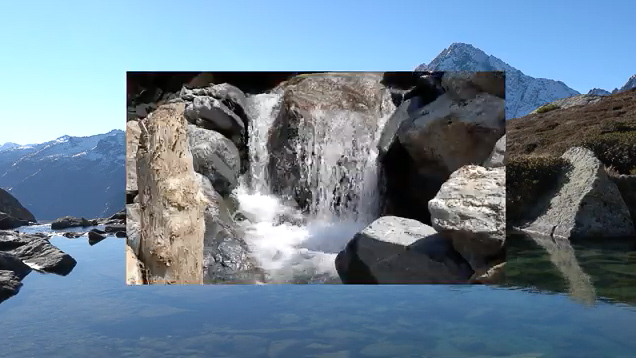

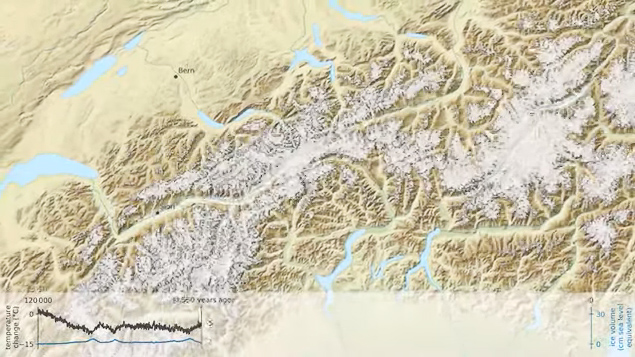

This film forms part of the contribution to the Venice Architecture Biennale 2021 by the Chair of Professor Günther Vogt, ETH Zurich.
The team consisted of Amalia Bonsack, Thomas Kissling, Andreas Klein, Max Leiß and Roland Shaw.
Video composed and edited by Roland Shaw.
Animation in part one by Julian Seguinot.



With focus on three elements, stone (project title: Rolling Stones), vegetation (Shifting Landscapes) and water (Common Water – The Alps) the contributions by VOGT Landscape Architects and the Chair of Günther Vogt at ETH Zurich raise the issue of accelerated transformation processes of today’s landscapes as a result of the changing environmental conditions and addresses the question, what these changes mean for the coexistence of societies.
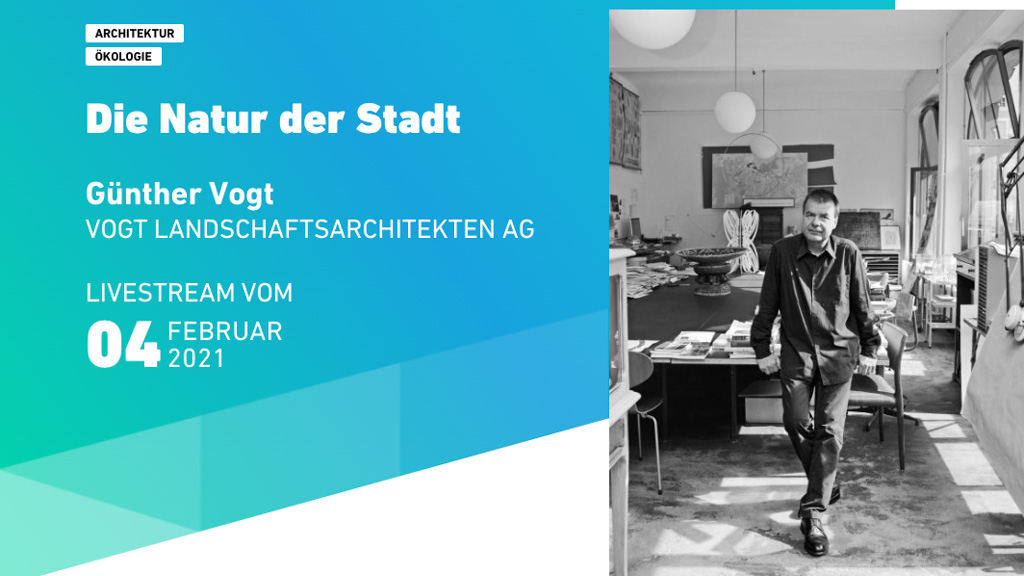

Unlike the wilderness, landscapes are shaped by humans. In essence a cultural good, discourse is at the heart of working with landscapes. Concepts and typologies such as gardens, parks, courts, squares and promenades lend landscapes a signature. They provide a matrix for the layout of the urban landscape and help distinguish its many facets from private to public spaces and their uses, scales, functionalities and ambiences. The rise in global temperatures induced by climate change not least creates the need for customised solutions addressing local conditions and a discourse about large-scale developments. Viable, future-proof cities must be conceived from a landscape perspective (lecture in German).
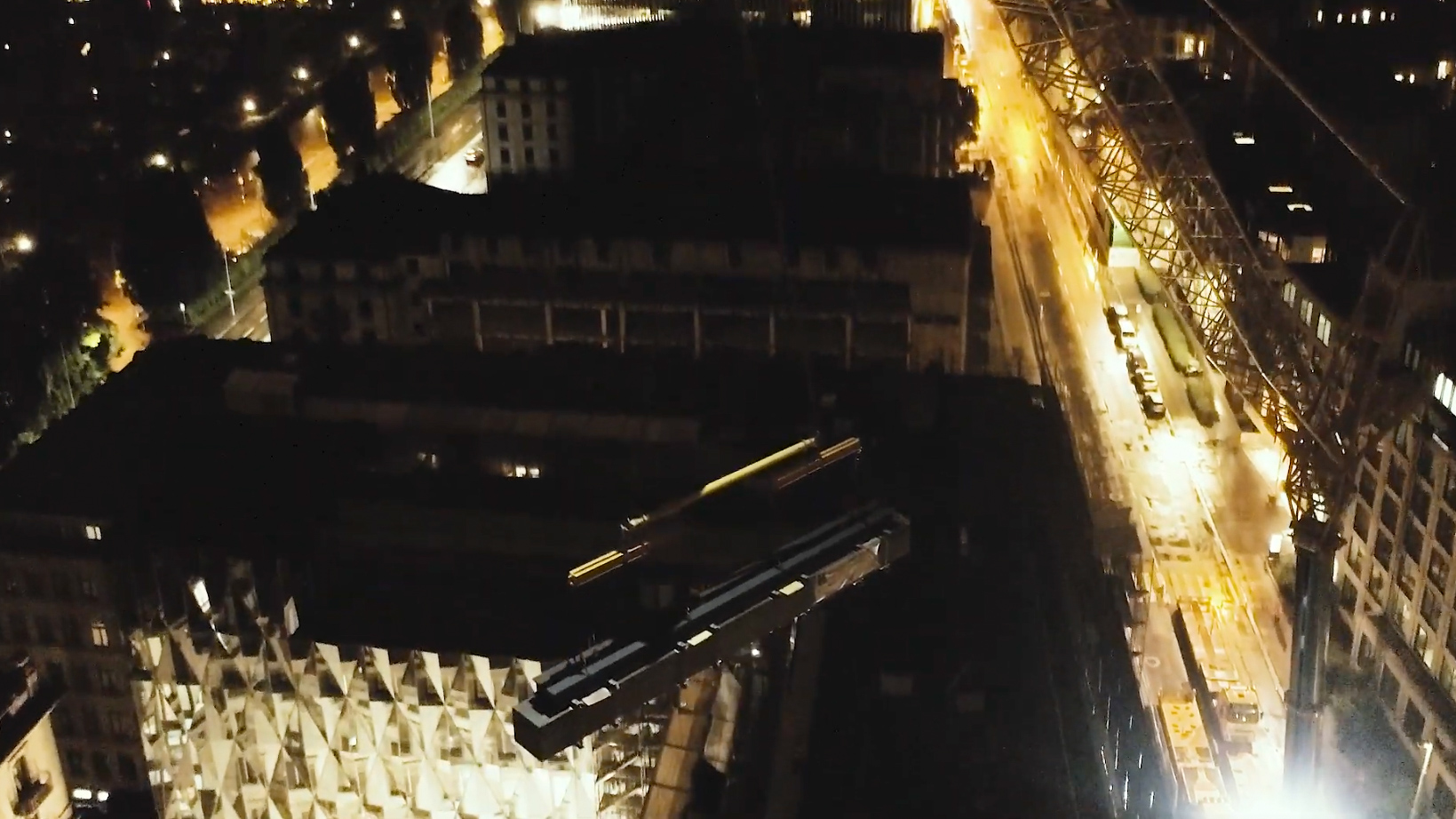

Zurich Insurance renovated its global headquarters (Quai Zurich Campus) in Zurich, Switzerland from 2017 to 2021. As part of the project, a 12-meter-long sandstone fountain was lifted over the building on Alfred-Escherstrasse and placed in the central courtyard on the campus in June 2021. Possibly the world’s longest sandstone fountain, carved out of one piece of sandstone, it’s an additional attraction in Zurich which has more than 1,200 fountains spread all over the city.
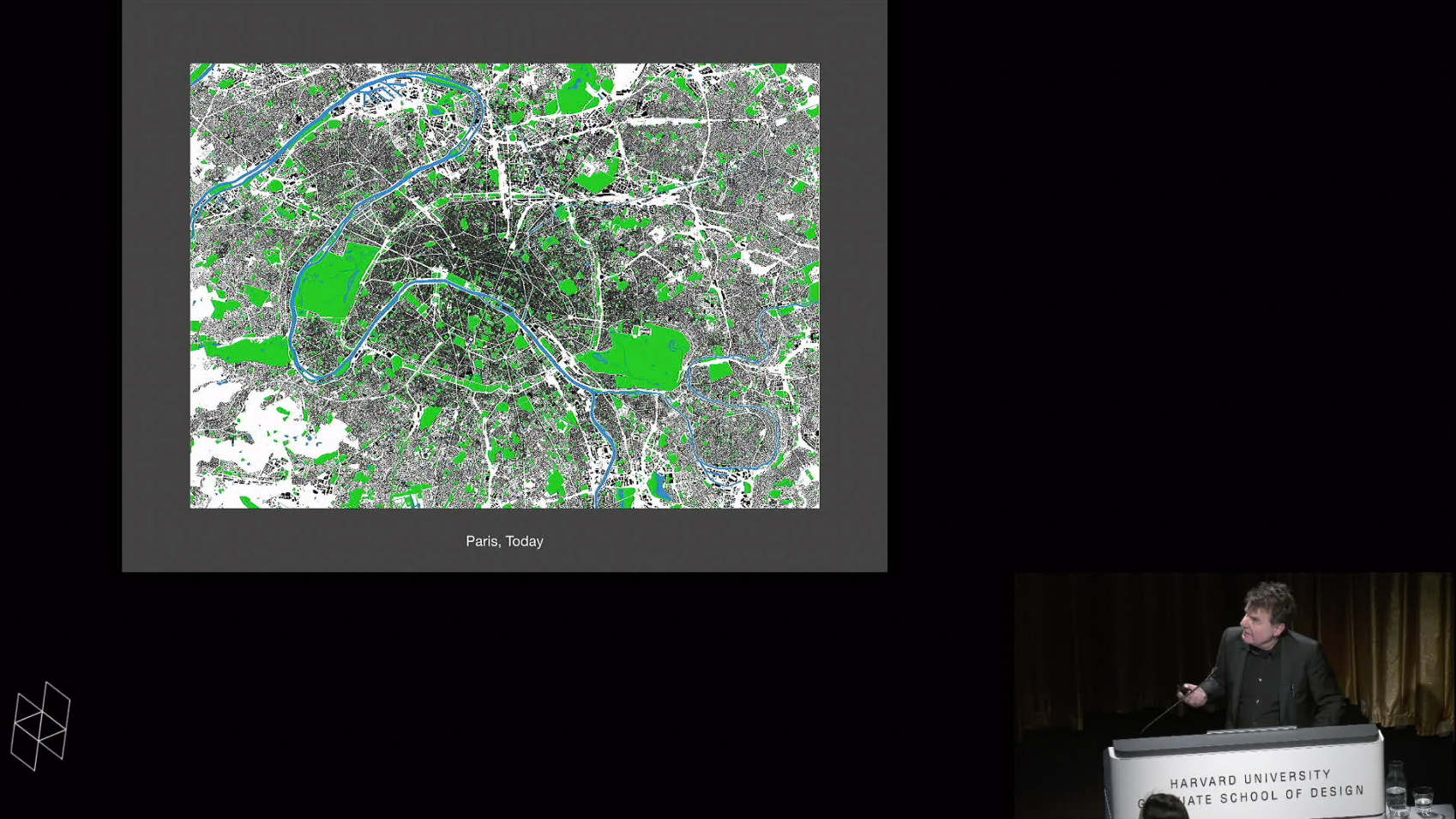

Frederick Law Olmsted Lecture delivered by landscape architect Günther Vogt. Vogt's lecture will also mark the opening of the exhibition Günther Vogt: First the Forests, which is on view in the Druker Design Gallery from January 21 – March 8, 2020. A reception in the gallery will take place immediately following the lecture.
What is the relevant scale for operating with the landscape of the city?
Since the Industrial Revolution at the latest, humans have become the determining factor for global ecosystems. This fact becomes apparent when we look at sediment displacement influenced by human activity, for example. There is thirty times more of it today than what natural processes cause. Due to our massive intervention in the Earth system, not just new landscapes are formed, however, but the conditions for cohabitation in our cities are also fundamentally changed.
Against this backdrop, solutions proposed by the current ‘green movement’ seem to have little viability. Green facades, vertical gardens or planted bridges deal primarily with esthetic aspects and are neither sustainable nor do they work as part of a network of lived public space. Vegetation is applied onto a construction framework, demoted to the ‘new ornament’ of landscape architecture.
Set against these neatly composed images, Günther Vogt applies a systematic design approach with his projects. Their success is measured not just by their design qualities, but primarily by their consequences for the environment. In the spirit of Friedrick Law Olmsted, who met the changing environmental conditions of his time with a holistic view of space, thinking in systems like this requires incorporating highly diverse scale levels and leads us from the miniature to the panorama of the city landscape.
Günther Vogt’s training at Gartenbauschule Oeschberg provided the practical basis for his intensive landscape work. His knowledge of vegetation and his skills in cultivation continue to be the very cornerstones of his work. His studies with Peter Erni, Jürg Altherr, and Dieter Kienast at Interkantonales Technikum Rapperswil, combined the disciplines of culture, design, and natural sciences. VOGT Landschaftsarchitekten emerged from the office partnership with Dieter Kienast in 2000. With projects such as the Tate Modern in London, Allianz Arena in Munich, or the Masoala Rainforest Hall at the Zurich Zoo, the firm has achieved international recognition. Its work is characterized by the dialogue established between the various disciplines and its close cooperation with artists. Since 2005, Günther Vogt has been pursuing a combination of teaching, practice, and research with his chair at the Institute of Landscape Architecture at the Swiss Federal Institute of Technology (ETH) in Zurich. In 2012 he was a visiting professor at Harvard Graduate School of Design (GSD). As a passionate collector and keen traveler, he is looking for ways to read, interpret, and describe landscapes, and finding answers to questions about future forms of urban coexistence.



The "Cardinal's Table" in the garden of Villa Lante in Viterbo served as inspiration for a 12-meter-long monolithic fountain made out of sandstone in the central courtyard of the Quai Zurich Campus at the Mythenquai in Zurich. Possibly the world’s largest sandstone fountain, carved out of one piece of sandstone, the monolithic water table was extended by the additional element of the "tablecloth". It refers to the stone carpets of the courtyards, the patterns of which are engraved as borders on the sidewalls of the table in elaborate handwork.



Around the year 778, the Rheinau monastery was founded on an island in the middle of the Rhine. Over the following centuries, the complex was continually expanded and the status of the monastery island and its library as a religious and cultural centre was consolidated. In 1862 only a few years later a sanatorium and nursing home was established in the former monastery premises. Today, the complex is home to the Canton of Zurich's School of Home Economics and a rehearsal centre for musicians. This time laps shows the construction of the renewed abbey courtyard planned by VOGT in 2017.
Link: https://www.vogt-la.com/abbey_island



The Vitra Campus is located in the Rhine Valley, at the base of the Tüllinger Hill, within a mixed context of cultural, industrial, and residential areas. Within the project for the landscape design for the immediate surroundings of the new museum-cum-storage facility: the Vitra Schaudepot by architects Herzog & de Meuron, VOGT undertook some studies on the integration of a playground within the masterplan for the Vitra Campus.
Link: https://www.vogt-la.com/vitra_schaudepot



The Vitra Campus is located in the Rhine Valley, at the base of the Tüllinger Hill, within a mixed context of cultural, industrial, and residential areas. The landscape design is for the immediate surroundings of the new museum-cum-storage facility: the Vitra Schaudepot (literally, a “viewing depot”), by architects Herzog & de Meuron. The design response was to apply the existing “front garden” typology to the main approach to the museum: visitors now walk through Persian ironwood hedges and pass under a long “garden art” pergola, allowing a transition between the residential and museum scales.



A landscape imprint, the vegetation impressed into the concrete walls provides a new type of display surface with which water can interact. Sound is created through the disruption of the water’s path along the wall, small interventions that assert the presence of water in the space and change the relationship of the water and wall to activate the viewer’s perception in new ways.
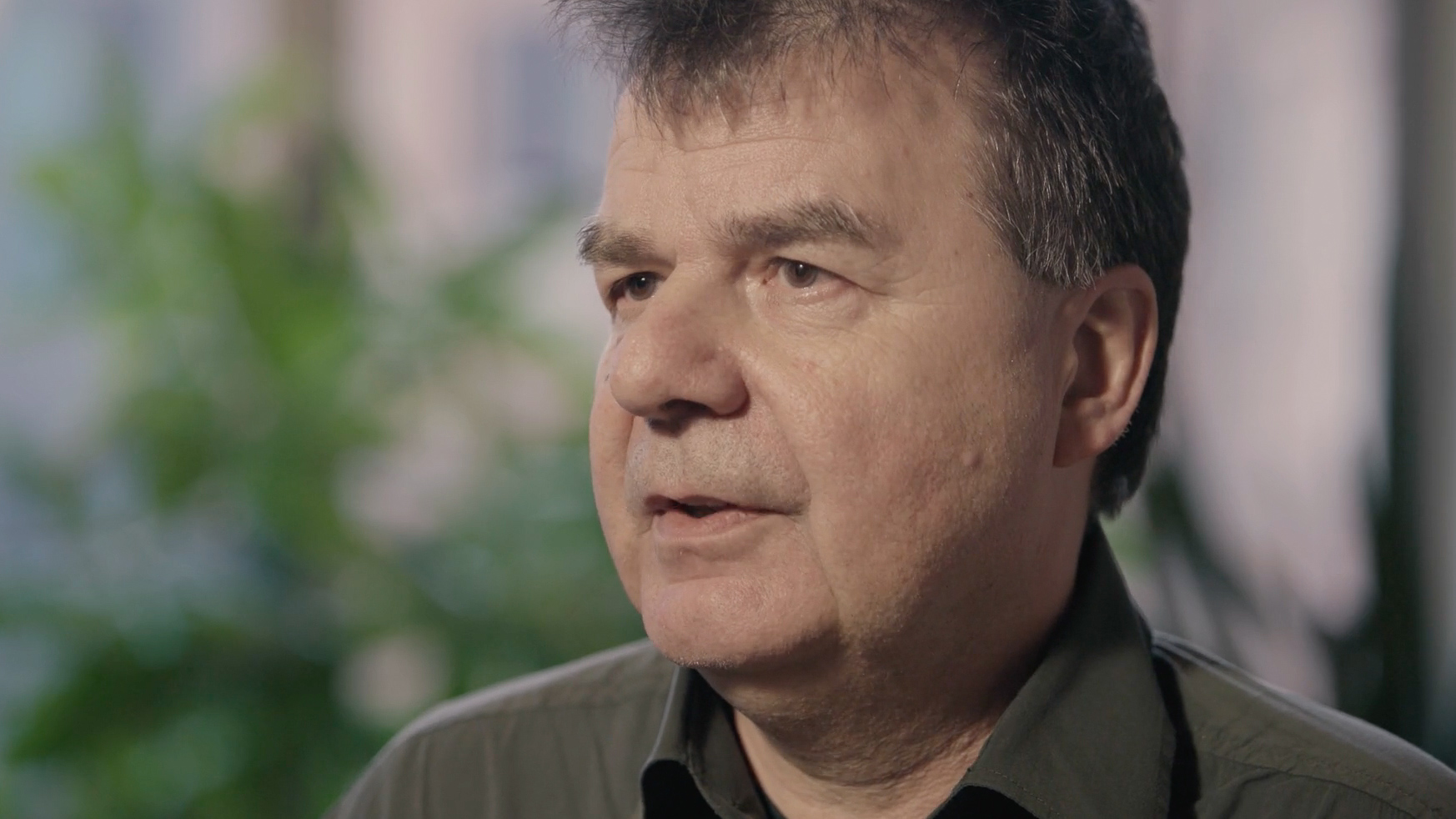

Landscape architect Günther Vogt visited the studio to talk about public space, the changing relationship between culture and nature, and more. Vogt is a professor at ETH, Zurich; his most recent book is ‘Landscape as a Cabinet of Curiosities’, 2015.
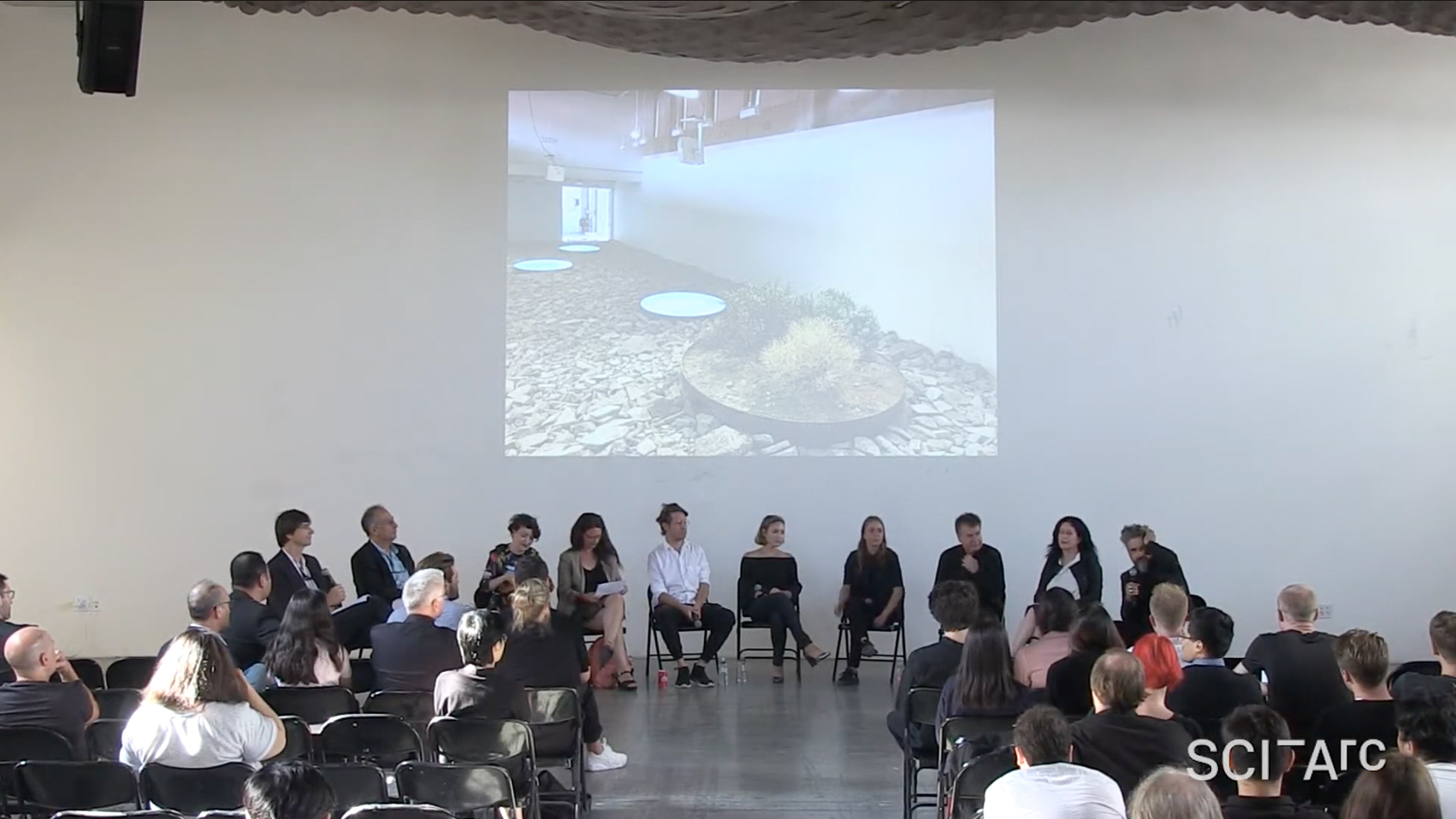

Hernan Diaz Alonso discusses the SCI-Arc Gallery exhibition Environment[al] (June 15 to August 26, 2018) with curators Herwig Baumgartner and Marcelyn Gow, and featured designers Izaskun Chinchilla, Enric Ruiz Geli of Cloud 9; Gilles Restin; and Violeta Burckhardt and Günther Vogt of Vogt Landschaftsarchitekten; plus historian/theorists Marrikka Trotter from SCI-Arc and Vittoria Di Palma from USC.
The exhibit features work by Carme Pinós and Wolf Prix of Coop Himmelb(l)au who are not present.
Hernan Diaz Alonso frames the exhibition as a provocation to push architectural discourse of sustainability and the environment out of superficial Greenwashing, technological fixes, and bad design.
Marcelyn Gow thanks the contributors, supporters, and student crew who realized the exhibit. Herwig Baumgartner describes the exhibition installation, designed by Vogt Landschaftsarchitekten, as a landscape of locally-sourced building waste (rubble from the Sixth Street Bridge, metal tank caps), accompanied by an audio map tracing the path of water from the Owens Valley to the ocean. The tank cap “bowls” contain sample environments or projects (videos projected into pools of water). Gow stresses that the exhibition addresses the question, “How can landscapes provoke us to be more aware of how we treat the built environment?”
Vittoria Di Palma discusses the exhibition as a dialogue about landscape, land art, and environment.
Marikka Trotter sees the exhibition as a correction to the notion of environment as something separate from people. Netween people and the environment there is always an infectious transfer, from us out, and from out to us.
Günther Vogt describes the exhibition design as a result of viewing cities as geological processes. He proposes designers should begin to view their use of materials as a geological process, analogous to Ferran Adrià’s molecular gastronomy developed at El Bulli.
Violeta Burckhardt proposes that the “nature” that figures in sustainability discourse should be viewed as a cultural production, rather than a commodity.
Enric Ruiz Geli contrasts the performance of materials as they are used in construction with the performance of a seed, which produces not only shelter but energy, air, water, and more. He notes that he is currently collaborating with Ferran Adrià on the home of the El Buli Foundation (Cap de Creus, Catalonia). He hopes architects can de-code architecture as molecular gastronomy has de-coded food. He also stresses the need for architects to be politically astute activists for sustainability.
Izaskun Chinchilla argues that the discourse of sustainability has been imposed on the discipline of architecture from the outside, and the initial response has been superficial – adding new features to the status quo – analogous to the way 19th century architects initially experimented with new materials and processes. In the same way that superficiality was eventually overcome, she sees architects developing new solutions regarding density, transportation, and growth. Also developing a new attitude of regarding the world not as a blank but as full, and expanding the span of time architects feel responsible for.
Gilles Restin views sustainability as a question of the current global system of production. He devised his intervention as a demonstration that a big infrastructure isn’t necessary.
Gow and the panelists discuss different understandings of the issues represented by all the different terms: landscape, territory, infrastructure landscape, borders, boundaries, etc. Panelists discuss the scale at which landscapes are currently being transformed.



SCI-Arc presents Environment[al], a public exhibition examining contemporary attitudes toward environment in a post-digital context. The capacity of constructed natures to produce admixtures of the natural and the synthetic is a focus. The changing character of environment in the context of technological innovation is considered through the projects in the exhibition. Taking into account recent approaches to our understanding of environment and contemporary modes of ecological awareness, the exhibition considers the possibility of environments where qualities are fused with objects not normally associated with them.
Environment[al]
SCI-Arc, Los Angeles
15 June - 26 August 2018
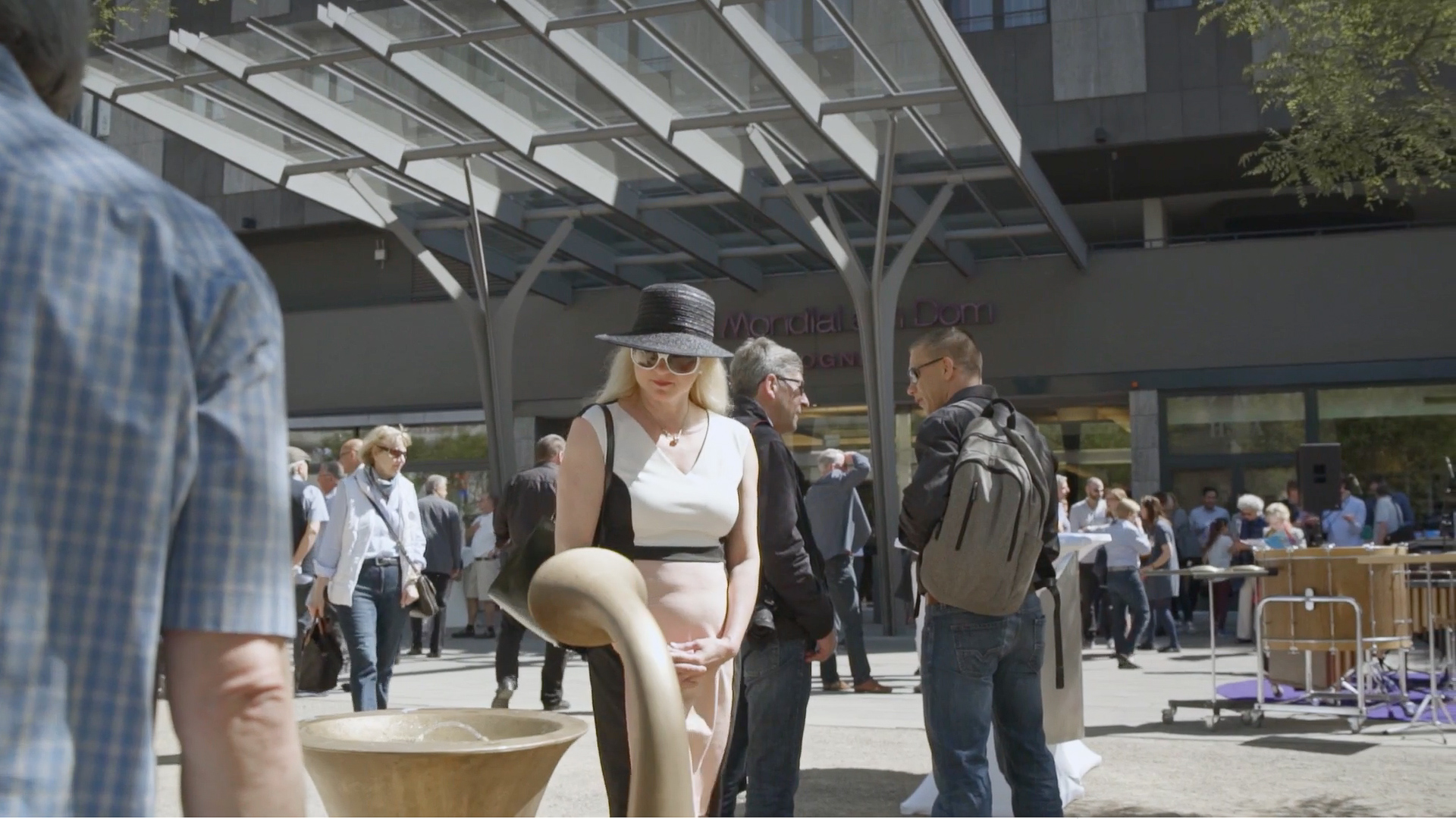

In summery temperatures and a festive ambience, the newly designed Kurt-Hackenberg-Platz was officially opened last Saturday as part of the nationwide Day of Urban Development. (...) The aim of the event on the Day of Urban Development Promotion was to make visible that the churches, cultural and art institutions located on the Via Culturalis and known worldwide are more than the sum of their individual parts, for they tell of Cologne's urban history over 800 metres in underground and above-ground traces.
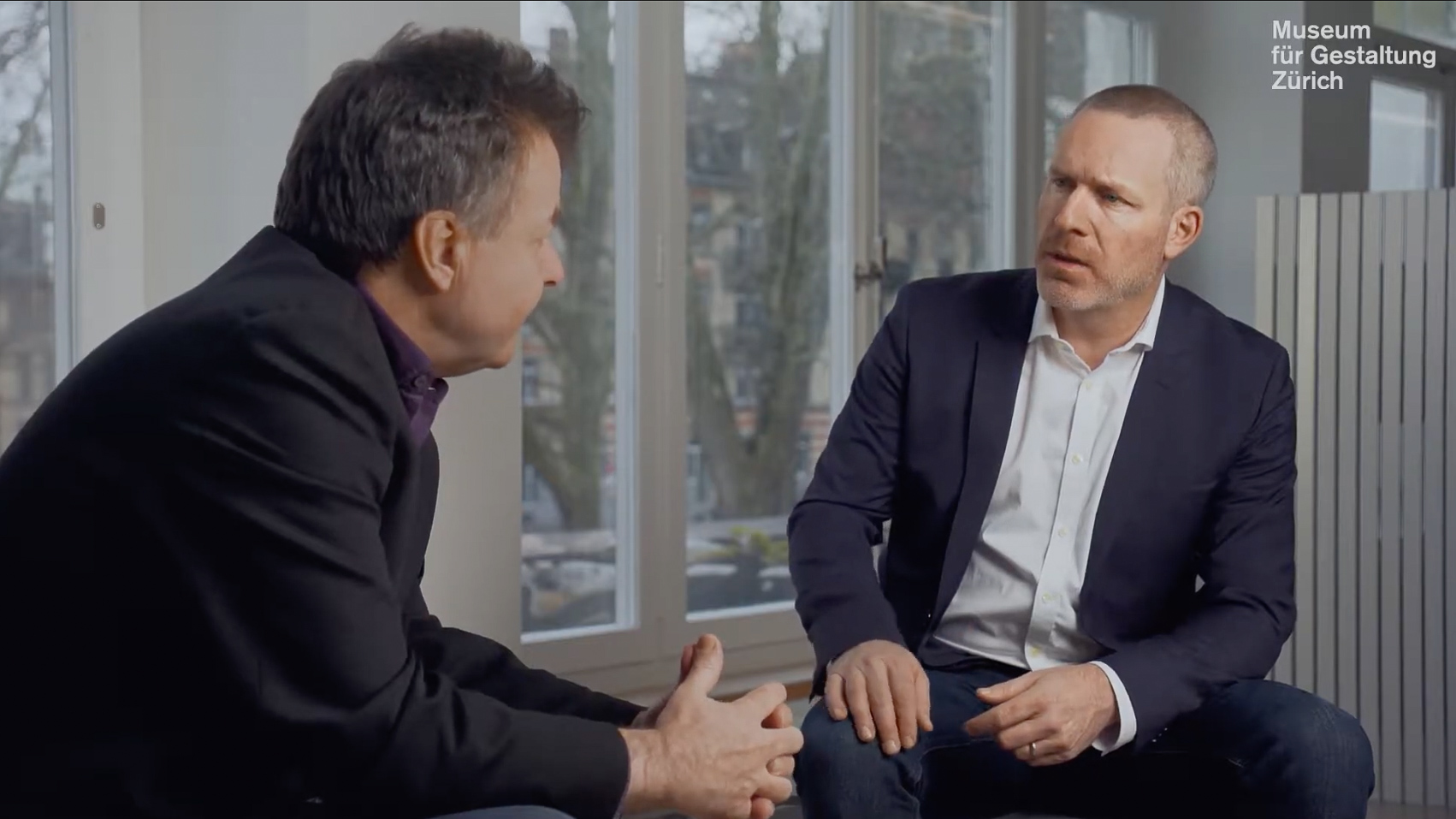

Günther Vogt, landscape architect in conversation with Christian Brändle, Director Museum für Gestaltung Zurich



For the exhibition Environment[al] at SCI-ARC, VOGT took on the task of mapping the LA River through sound. The intention behind this was to create a soundtrack of the moving water through the different contexts through which it runs. The plants embedded in the exhibition landscape are connected to sensor devices that trigger the sound, following the Los Angeles River from its source, way up in the Owen‘s Valley, until its final destination: the sea. As visitors interact with the plants, a sonic and invisible landscape emerges, as different layers and qualities along the river‘s path come to life. An auditory visualization of movement and flow through a cacophony of sounds and an interplay at the thresholds between the analog and the digital.



Using a model to draw up a concept for a square.



Using different sketching techniques to draw up a concept for a square.
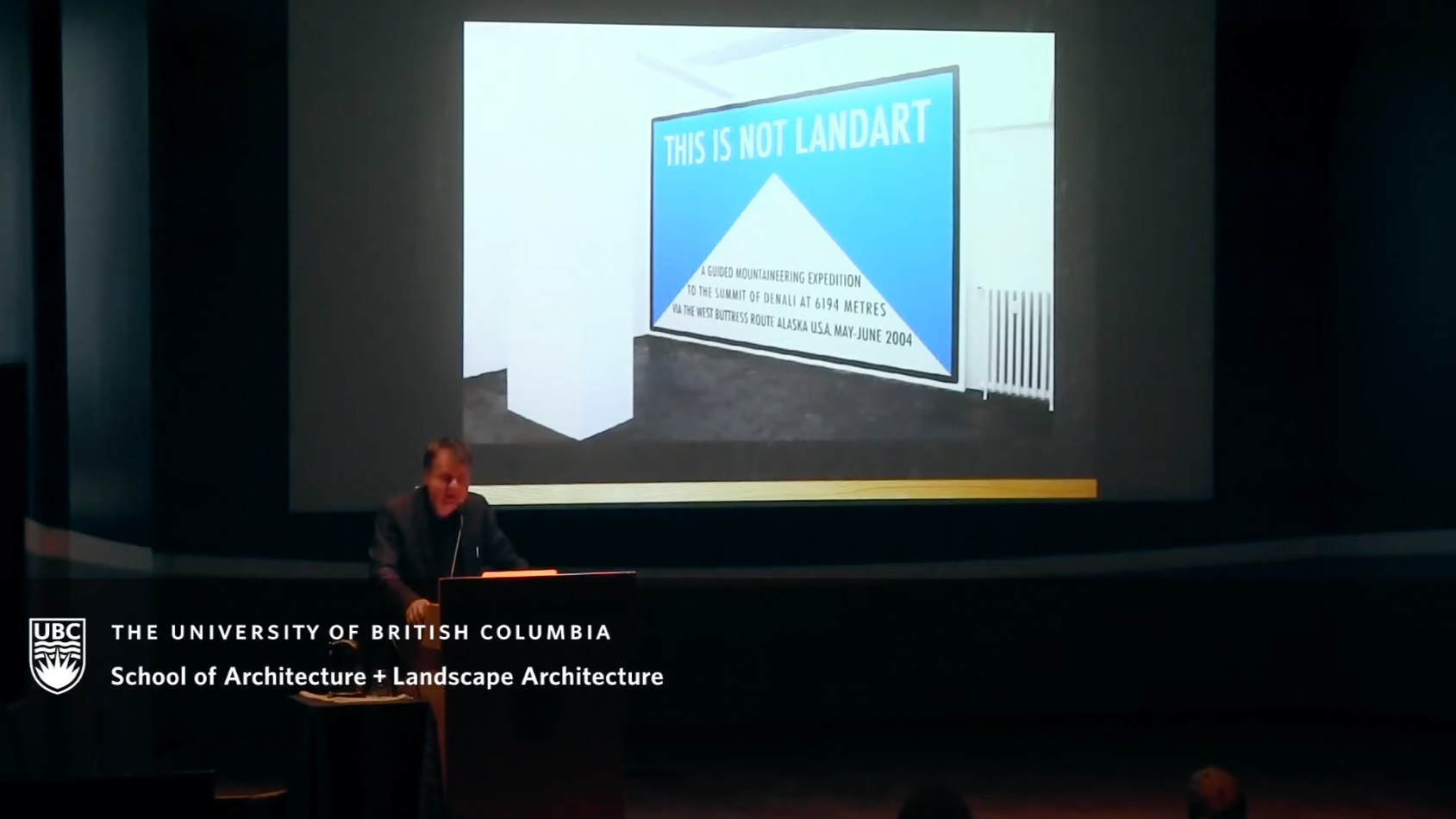

Paul Sangha Lecture by Günther Vogt, Vogt Landscape Architects, Zurich, Switzerland.
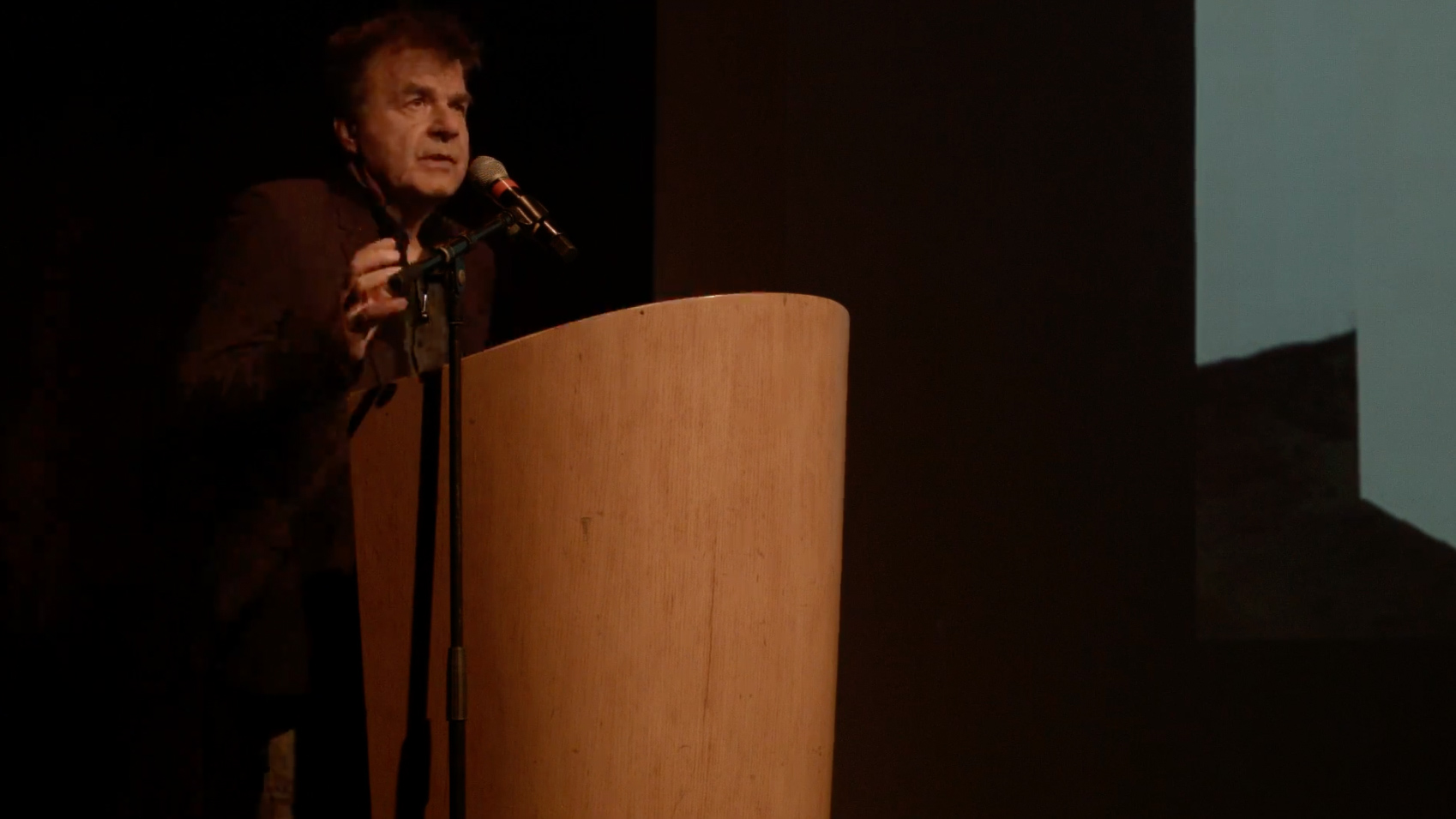

Lecture by Günther Vogt
Centre for Fine Arts, Brussels, 06.12.2016



The fences and gates of the Villa Rosau in Zurich tell the site’s story and are of great importance from the point of view of monument preservation. The existing pieces from the forged, magnificent iron fence were restored through elaborated craftsmanship by a blacksmith. Unusable parts were replaced by newly forged pieces based on historical plans.



The fences and gates of the Villa Rosau in Zurich tell the site’s story and are of great importance from the point of view of monument preservation. The existing pieces from the forged, magnificent iron fence were restored through elaborated craftsmanship by a blacksmith. Unusable parts were replaced by newly forged pieces based on historical plans.
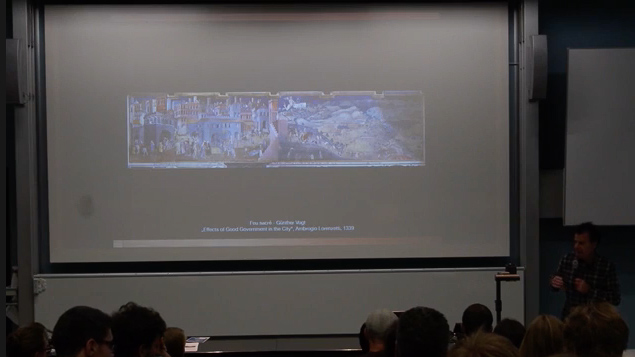

Günther Vogt runs three landscape architecture offices in Zurich, London and Berlin with forty employees. Together with them, he has given and continues to provide landscape architecture in Europe and around the world. Impulses. One of his great passions is plants; many of his designs bear witness to this. The knowledge of plants often already shapes the research and the concept. Plant-dominated facilities such as the Novartis Campus in Basel or the Masoala Halle in Zurich show how vegetation's targeted use can almost single-handedly determine a location. It is also plants that make it possible to have an intensive relationship with nature in the city, despite all the densification.
Based on his enthusiasm for plants, Günther Vogt will present vital projects that are strongly determined by plants, which means a lot to him personally. He will give the working methods in the offices, his research and developments, and some of his major projects. After that, he will answer questions from the audience. Over an aperitif, there will be an opportunity for further discussion.
Introduction and moderation: Hansjörg Gadient
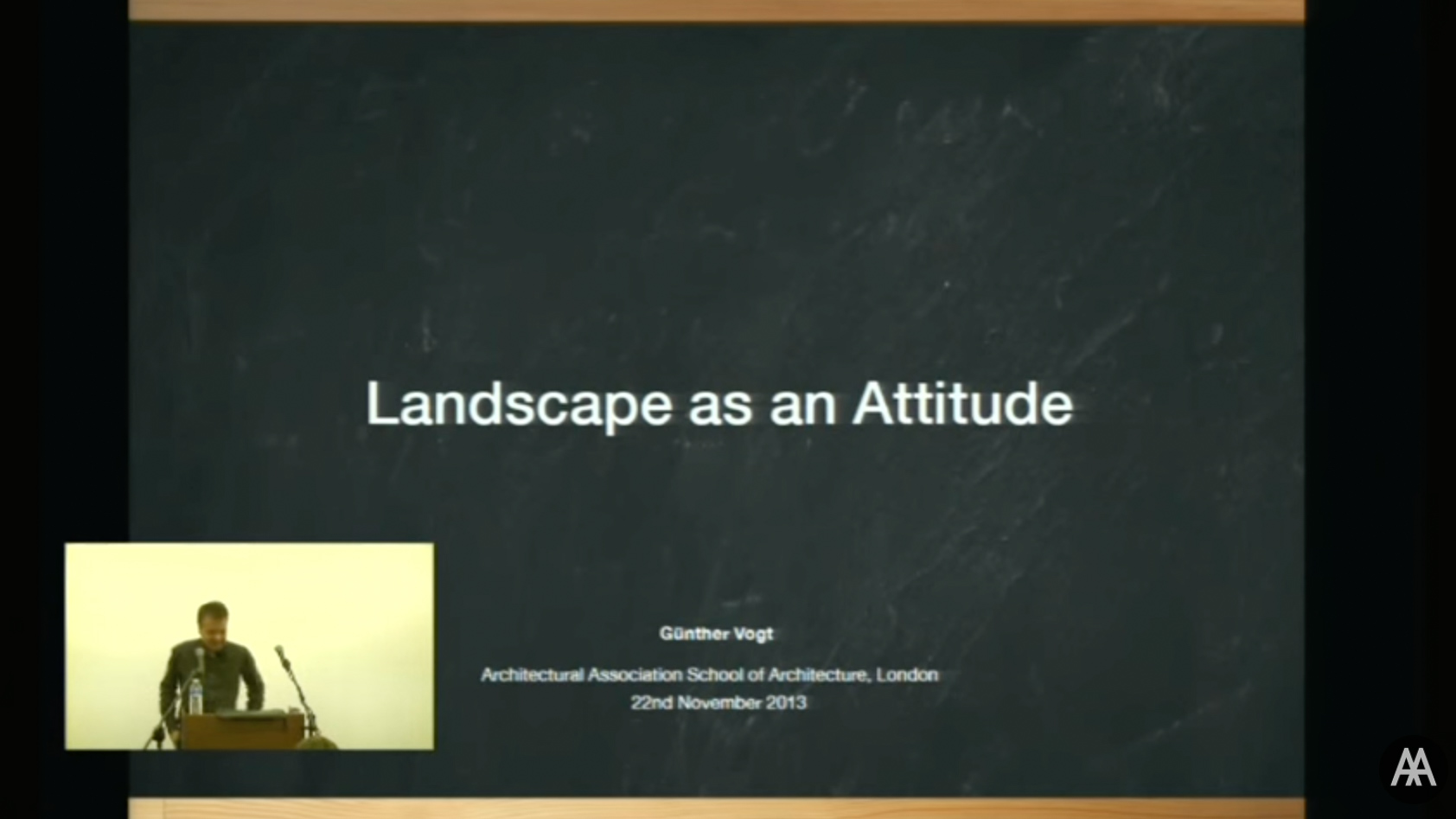

How should the principles of the urban landscape be understood and what possibilities does this environment offer to the designer? Understanding landscape in terms of its archetype entails going out into nature. In Switzerland extreme geological phenomena are as omnipresent as they are self-evident, and their secrets are obscured by their very familiarity. In England, however, the geology lies hidden in the landscape in a more subtle way. It has to be consciously discovered, traversed and discerned beneath the surface. Using examples from both Switzerland and England, Günther Vogt will highlight differences in designs and similarities in current projects’ processes.
Günther Vogt opened VOGT Case Studio in 2010. Since 2005, he has been Professor of Landscape Architecture at the Swiss Federal Institute of Technology (ETH) in Zurich



In the rectangle of the wind- protected treetops, the momentary motion occasionally interrupts the monochromatic still image. Through the rotation of the tree, a light, poetic rustle is heard. The dancing tree emerges from its state of stillness standing out from the collective system of the forest- a choreographed dance ignited by light that brings life through an artificial alteration of the plants movement.
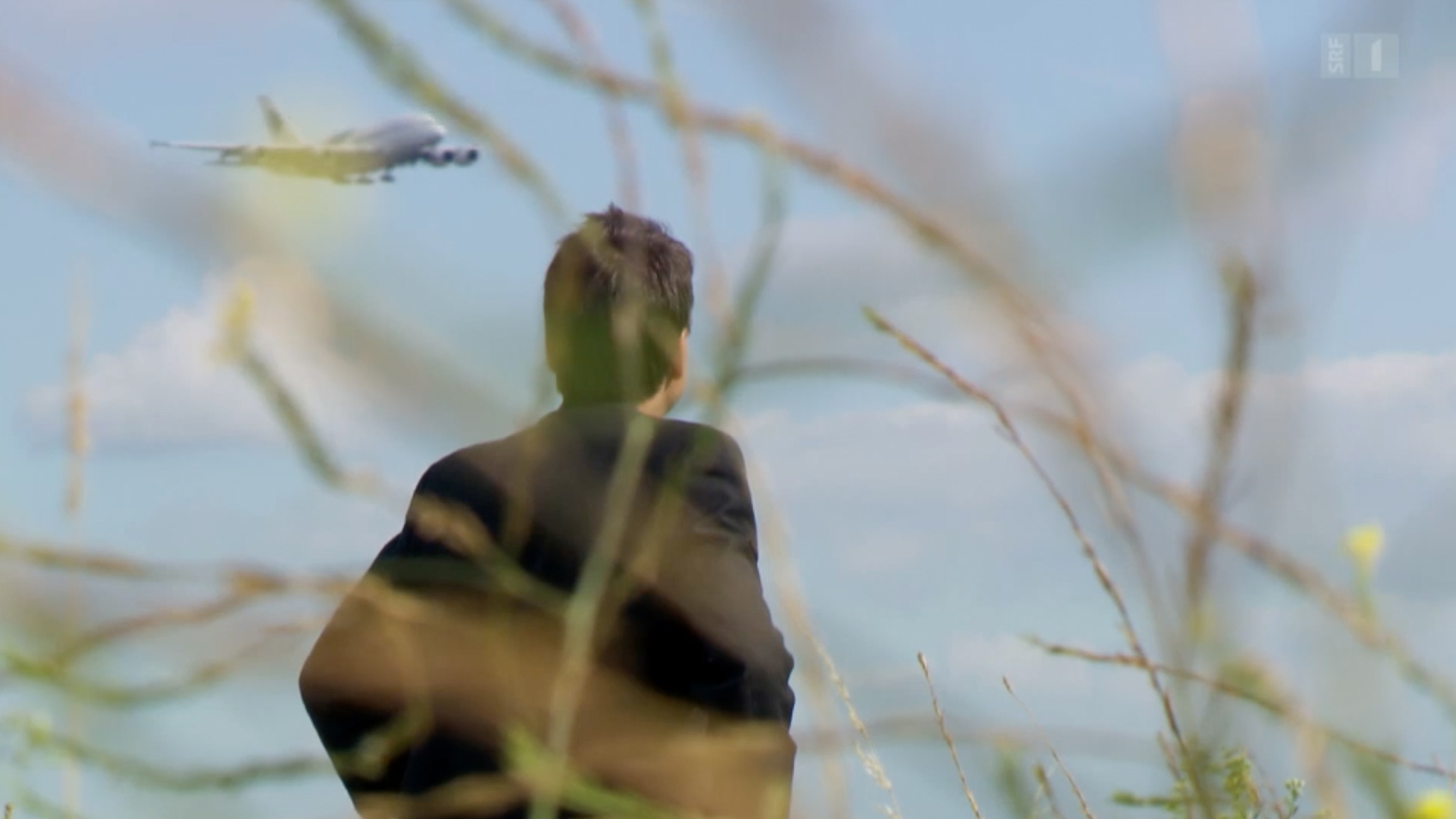

In the increasingly digital world, landscape architecture is experiencing an increase in importance. People in cities are once again longing for immediate experiential spaces. The internationally renowned landscape architect Günther Vogt, with offices in Zurich, London and Berlin, knows how to fulfil this longing in a contemporary, poetic way. After works such as the Masoala Hall in Zurich or the area around Munich's Allianz Arena, Vogt's office is now tackling the next Herculean task, a vast park near London's Heathrow Airport.
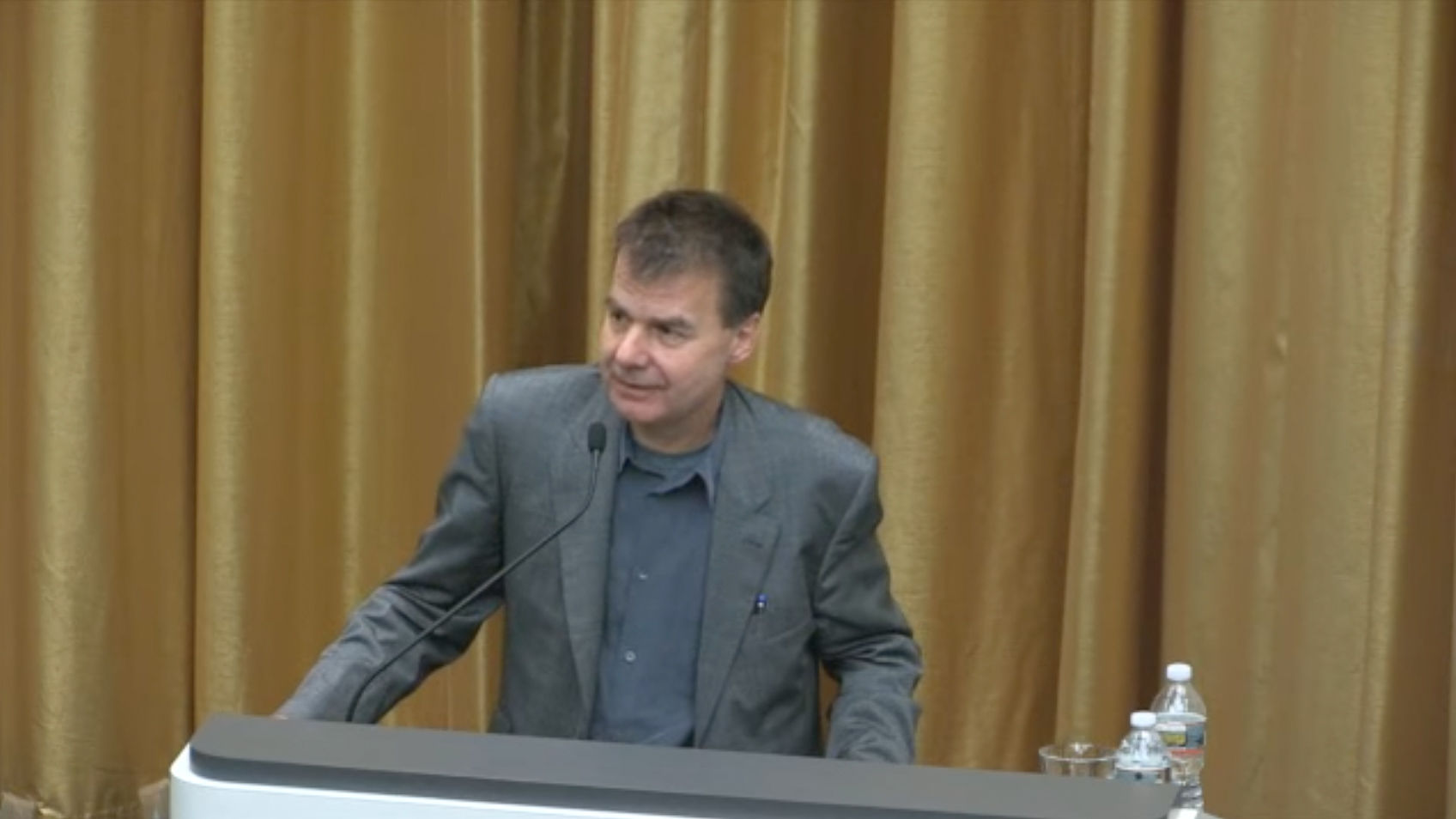

Over the past ten years, Günther Vogt of Vogt Landscape Architects, Zürich, has designed a wide variety of public and private outdoor spaces in Switzerland and Europe. These include the grounds of the Allianz Arena in Munich, the Trinity Laban Conservatoire of Music and Dance and Tate Modern in London; and the FIFA headquarters and Masoala Rain Forest Hall in Zürich.
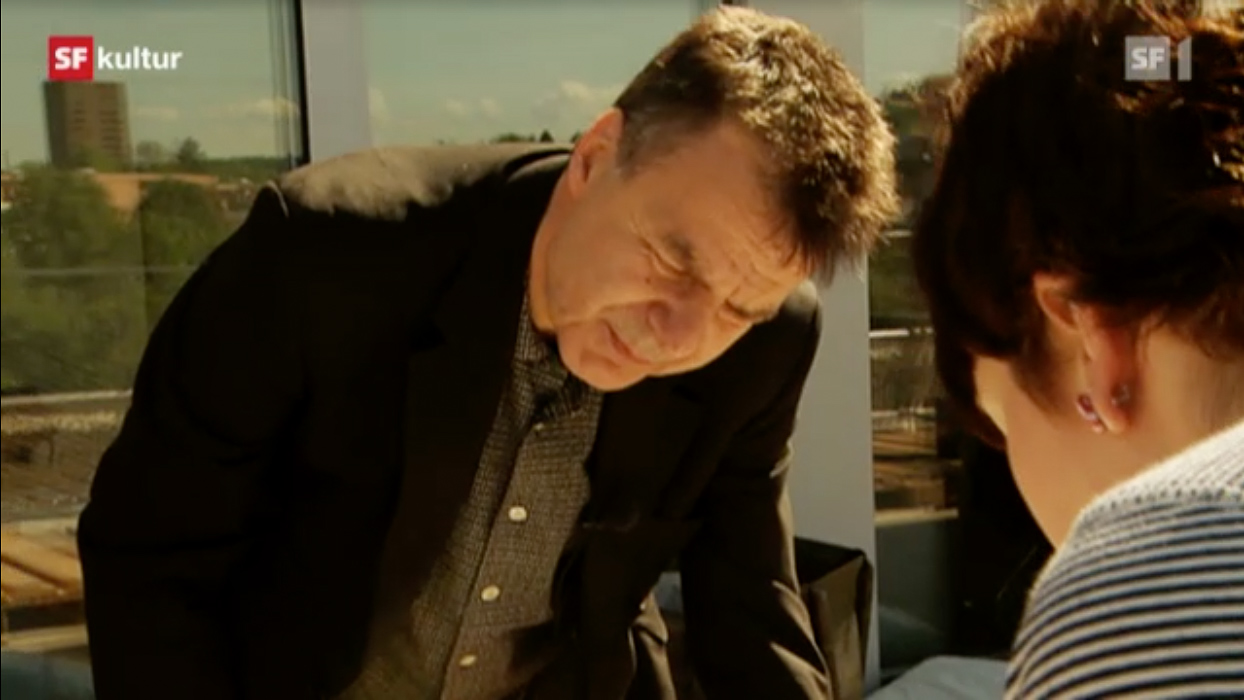

More and more city dwellers are seeking nature at home. Balcony gardens are exploding. Neighbourhood gardens are springing up. Cool self-expressionists want to weed, artists plant potatoes: is this modern man's longing for tranquillity and originality? Does the future of agriculture lie in the city? "Kulturplatz" visits urban gardens and meets citizens who not only eat their own vegetables but also want to make a political statement. Günther Vogt, Switzerland's best-known landscape architect, explains why "urban farming" is more than just a current trend.
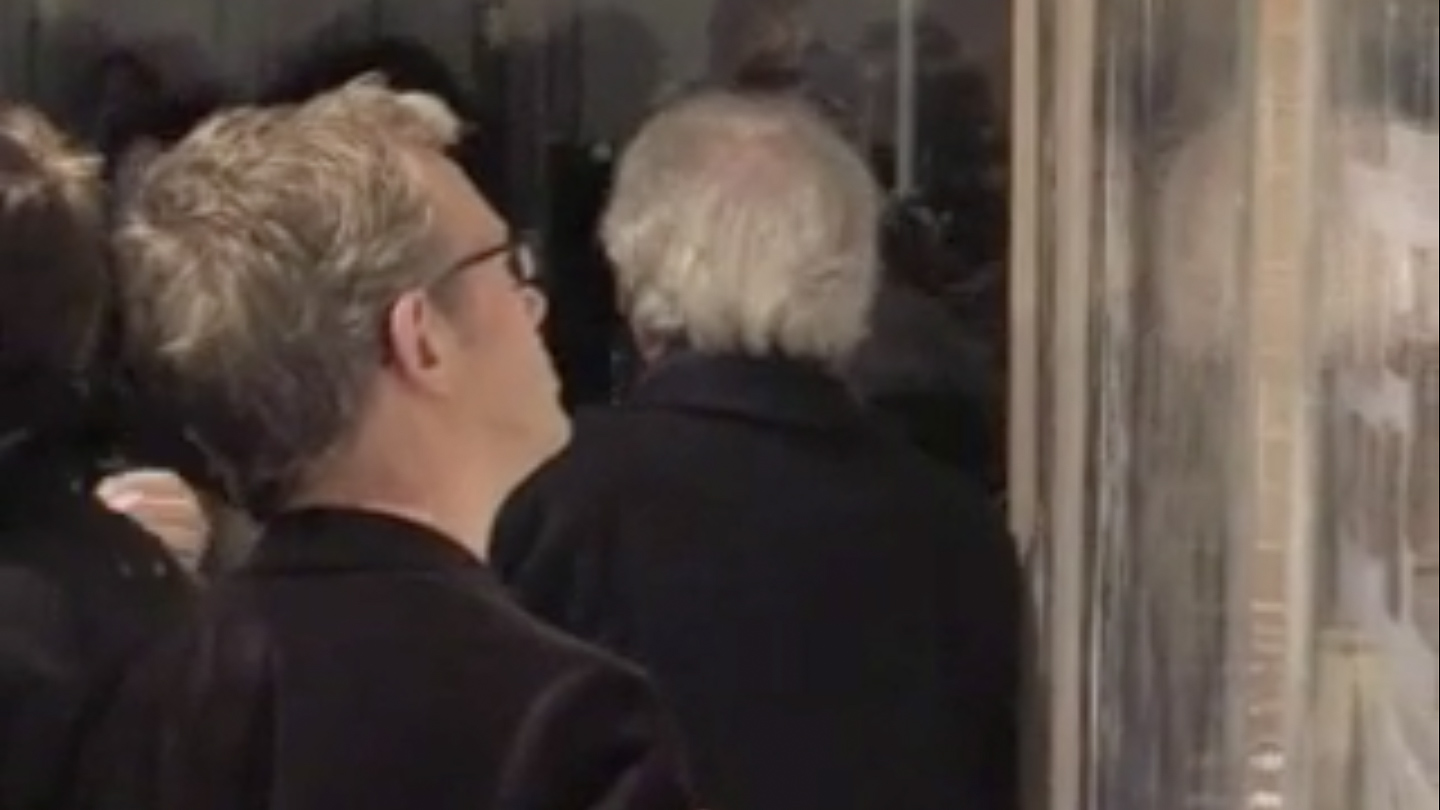

With an exhibition on Swiss landscape architects Vogt, AedesLand opens the first worldwide forum for landscape architecture and urban space in the former rooms of the Galerie Aedes at Savignyplatz in Berlin. This realignment in focus becomes manifest in the renaming of the gallery to AedesLand.
From Friday, March 2nd to May 20th, 2007, Vogt Landschaftsarchitekten - based in Zurich and Munich - present their work at Savignyplatz in Berlin. Titled "Lupe und Fernglas - Miniatur und Panorama" (“Magnifying Glass and Binoculars – Miniature and Panorama“), the show offers insights into their creative activities as well as into the mindset and working methods of this internationally operating office for landscape architecture.
The focus of the exhibition lies on the perception of nature. Its examination and analysis is a requirement for the daily work of a landscape architect. Each planning task is determined by this subject and thus forms the basis of the exhibition concept. What is nature? How is it perceived and how can it be conveyed within the context of an exhibition?
Exhibition
24 March – 3 June 2007
Speakers
Prof. Dr. Udo Weilacher, Landscape Architect, Author
Günther Vogt, Landscape Architect
Source/Credits: Aedes Architecture Forum
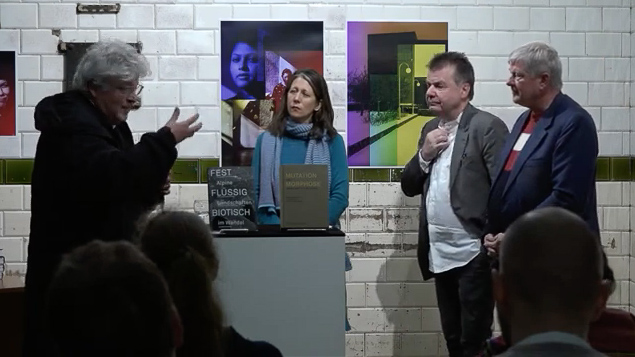

The Architecture Book Festival at Never Stop Reading is a collaboration of several Swiss publishers who present current topics around architecture and urbanism with authors and editors of their new publications and invite people to exchange ideas. Sabine von Fischer, editor for architecture and design at the Neue Zürcher Zeitung, was in conversation with architects, architectural theorists, landscape planners and professors over four days about ideas for sustainable building, urban planning for lively public space and the challenges of communicating architecture.
On 18 November, everything revolved around the topic of landscape planning and urban climate.
On the occasion of the publication of Solid, Fluid, Biotic - Changing Alpine Landscapes, the passionate "promenadologists" Günther Vogt and Markus Ritter, who learned the science of walking from Lucius Burckhardt, were chatting about the changes in the Alpine landscape, the causes and consequences.
How is the Alpine settlement area changing?
with Markus Ritter, Günther Vogt and Lars Müller Publishers

